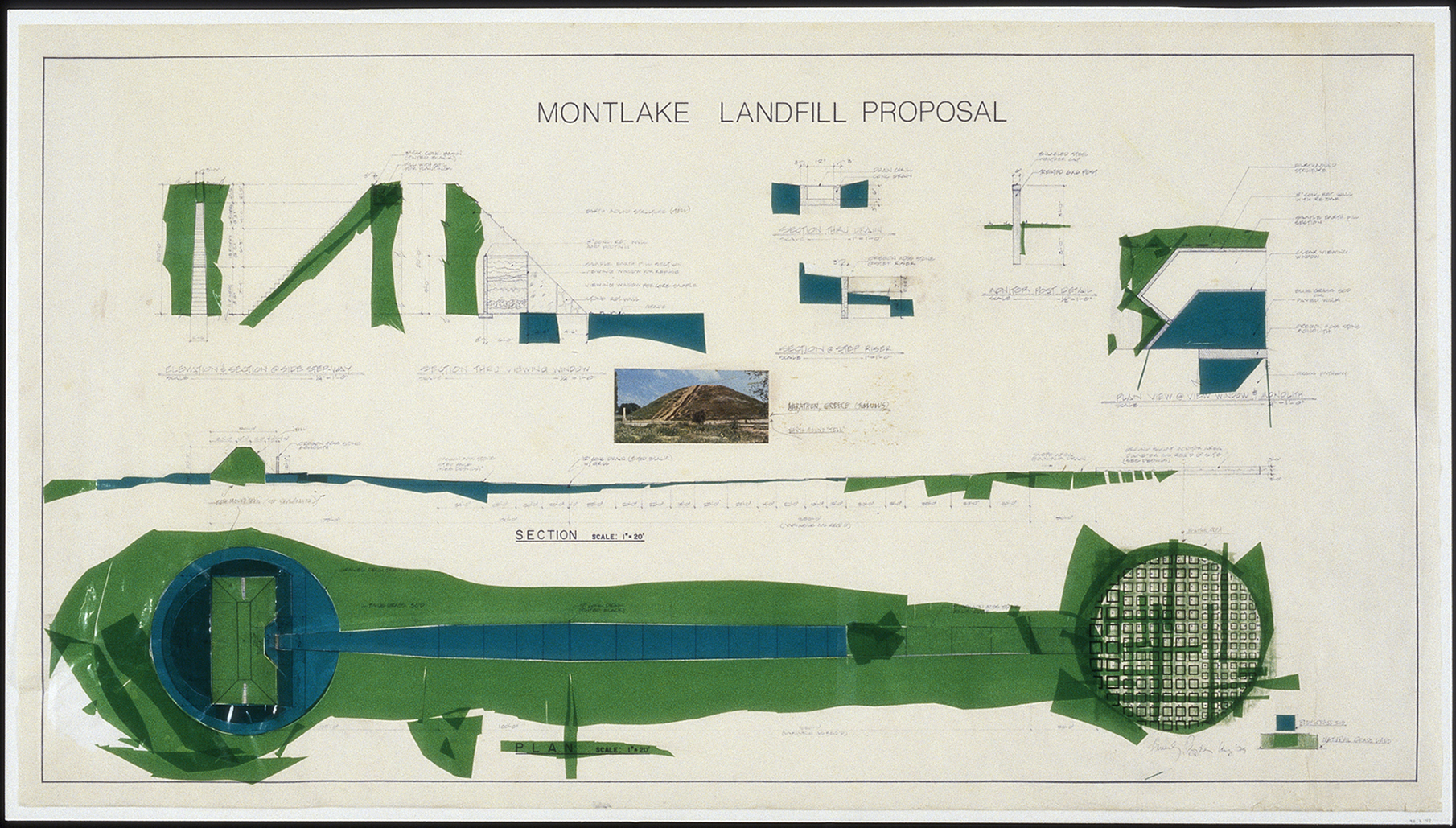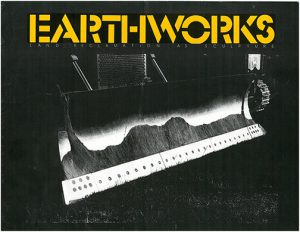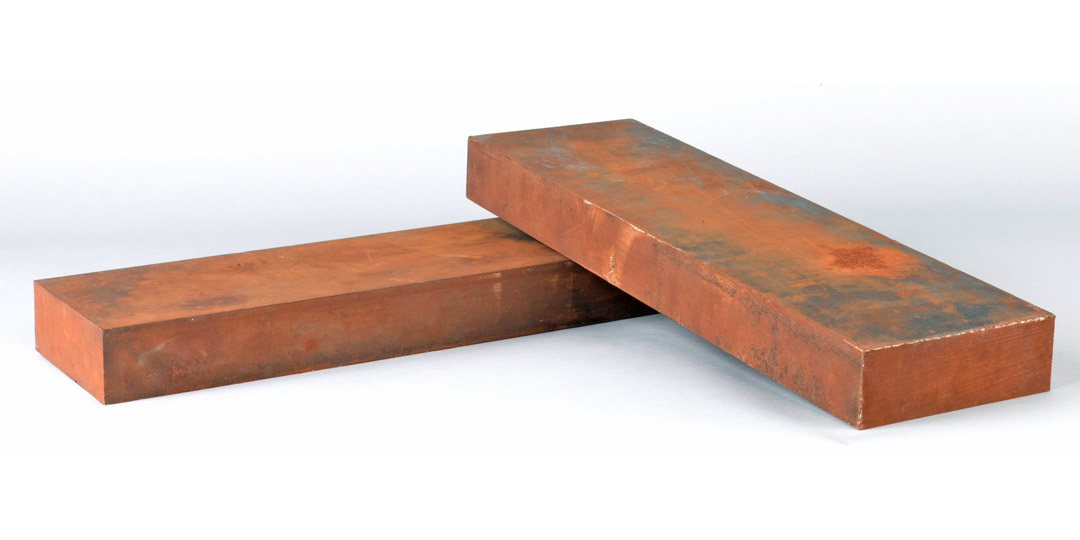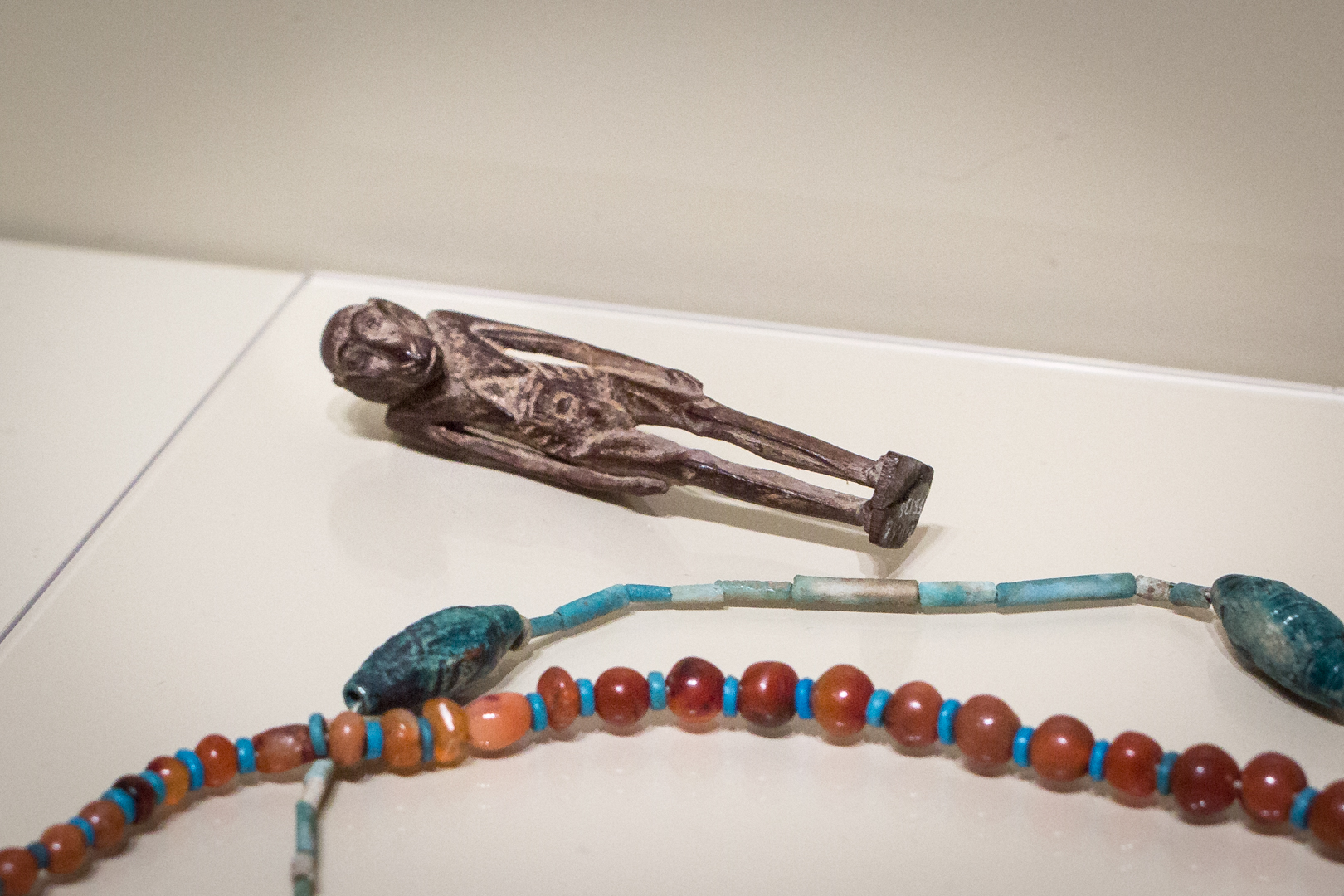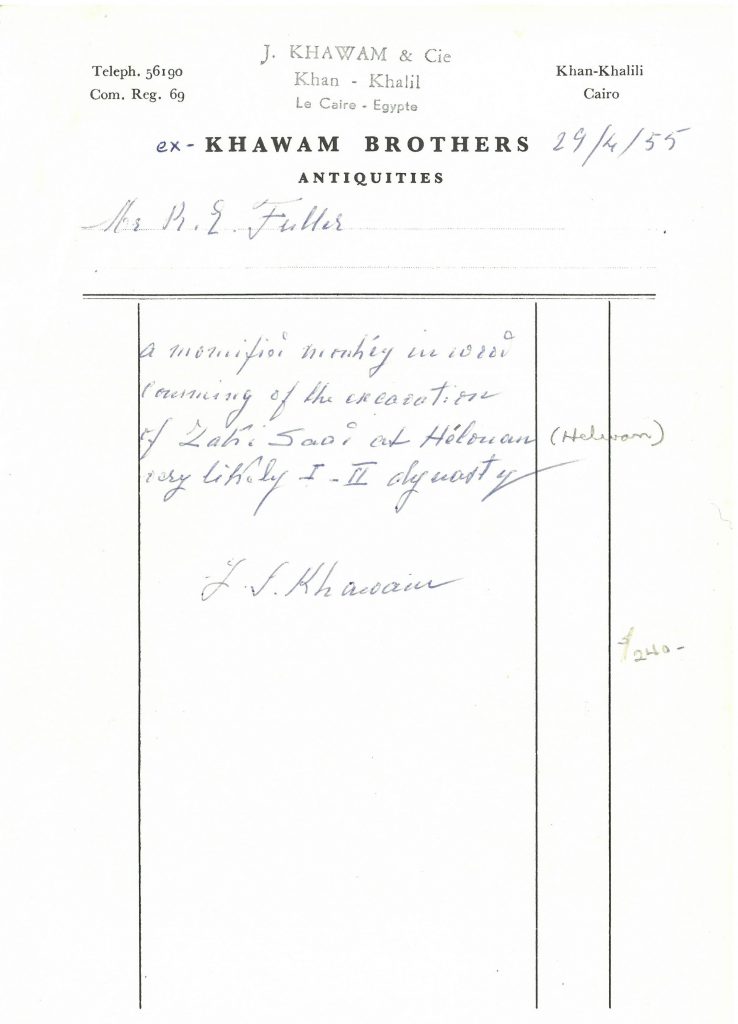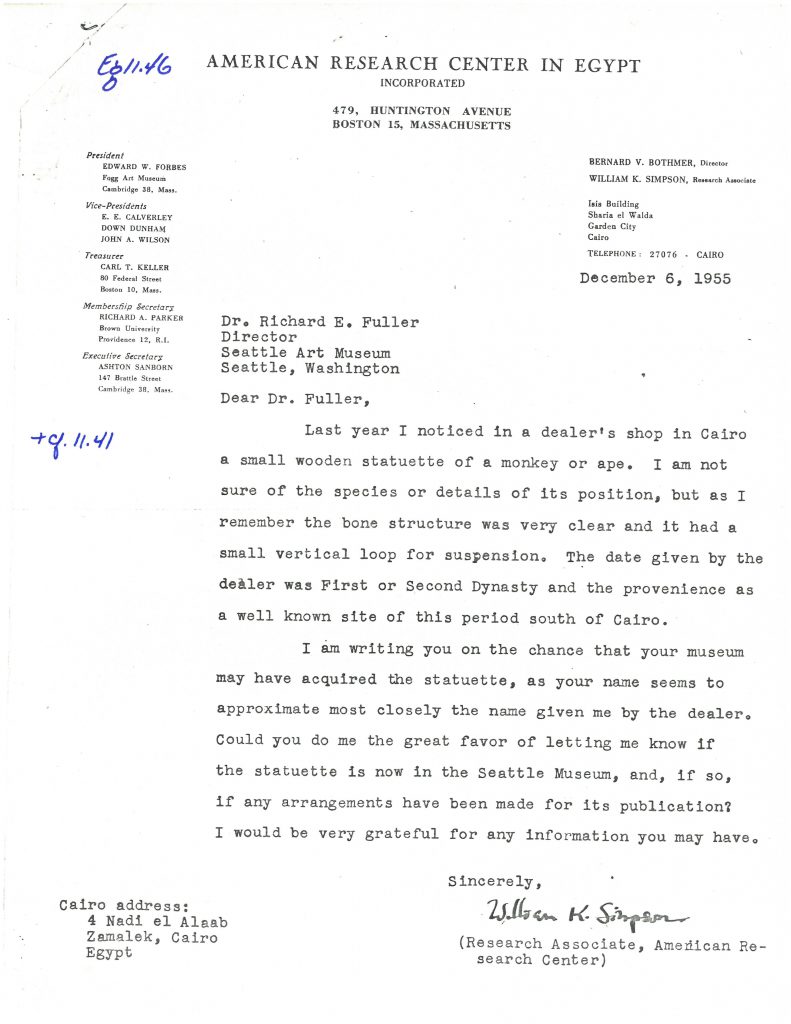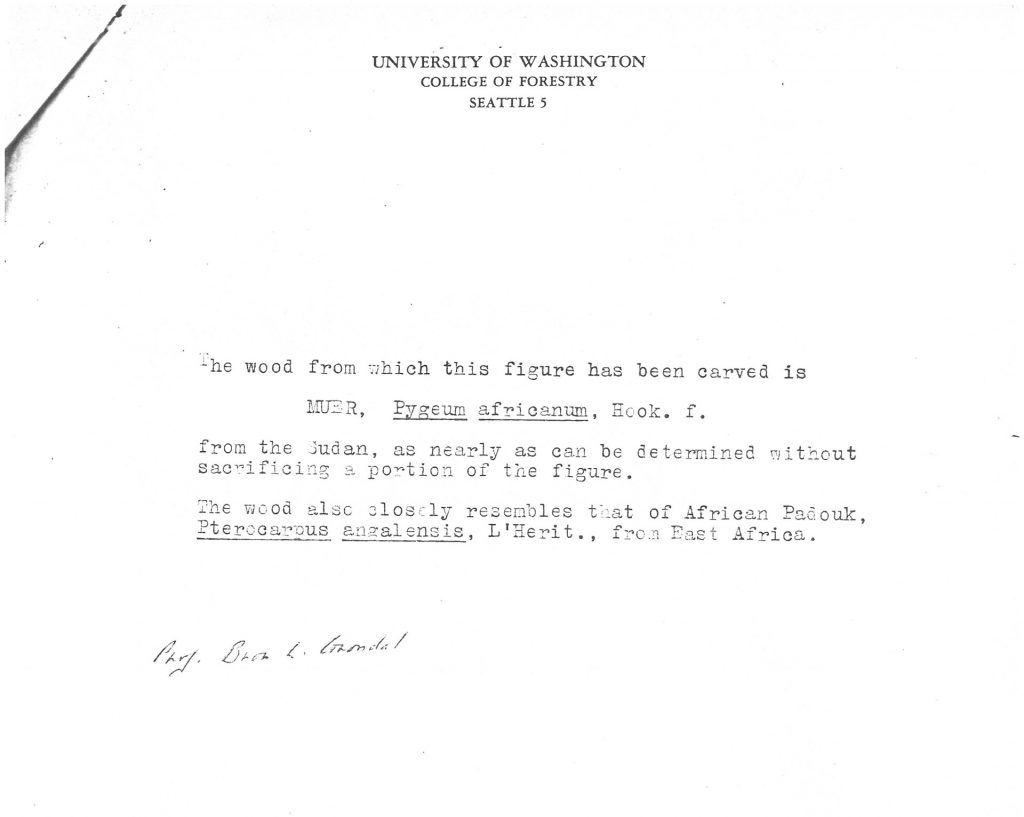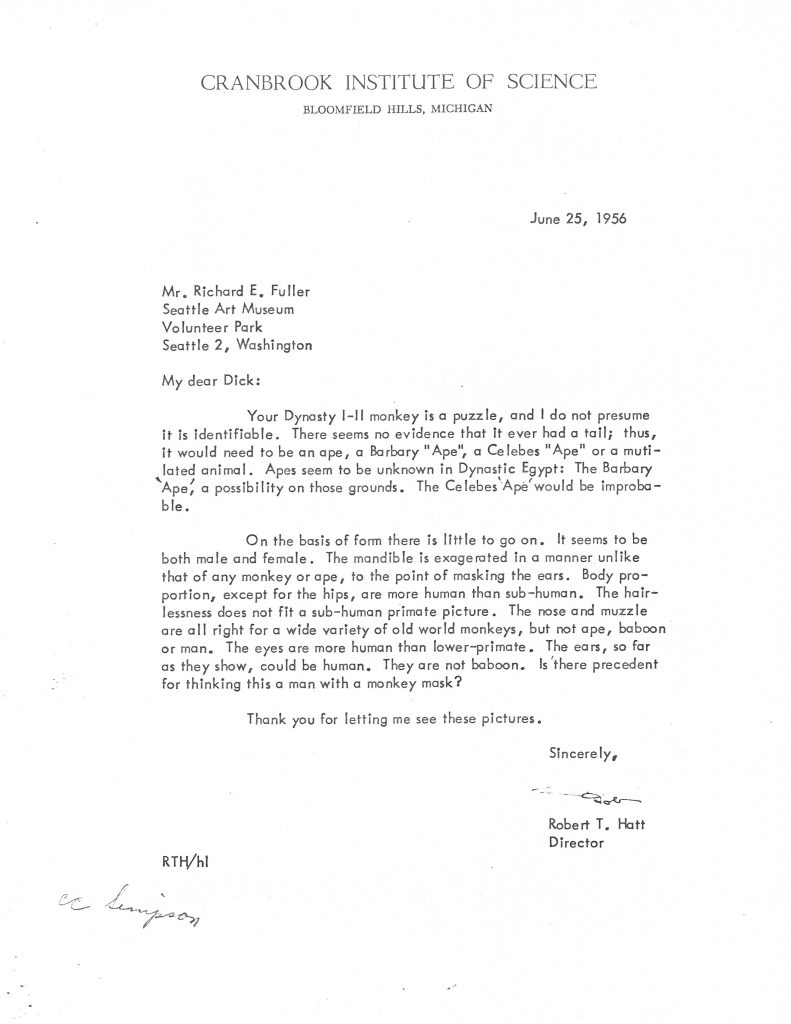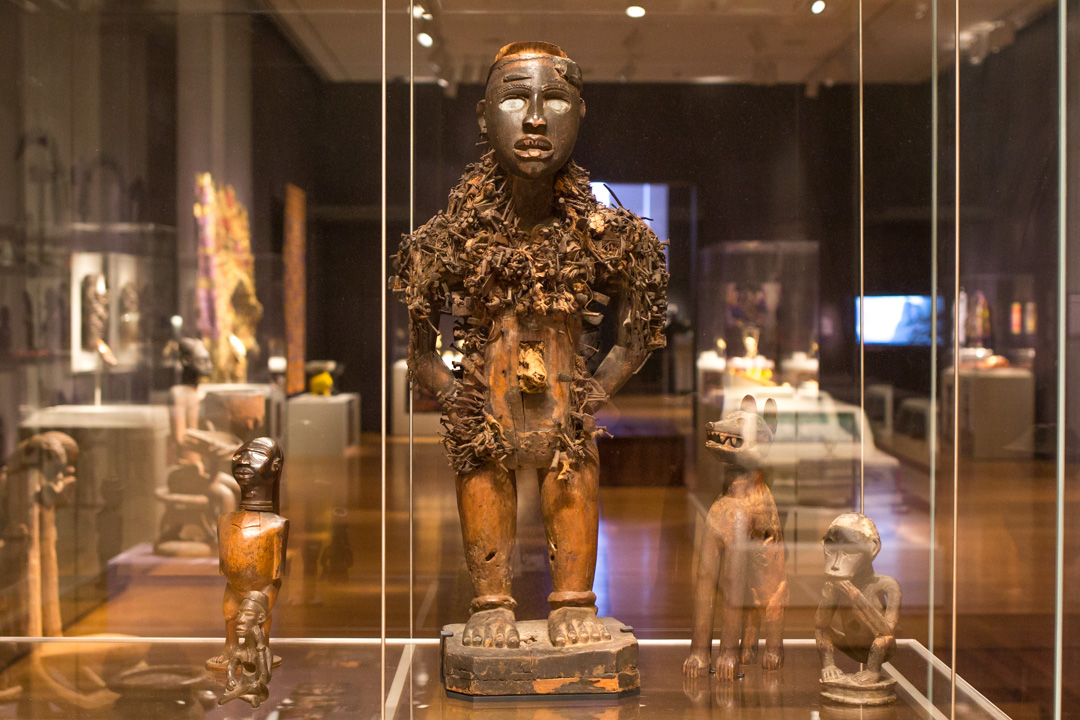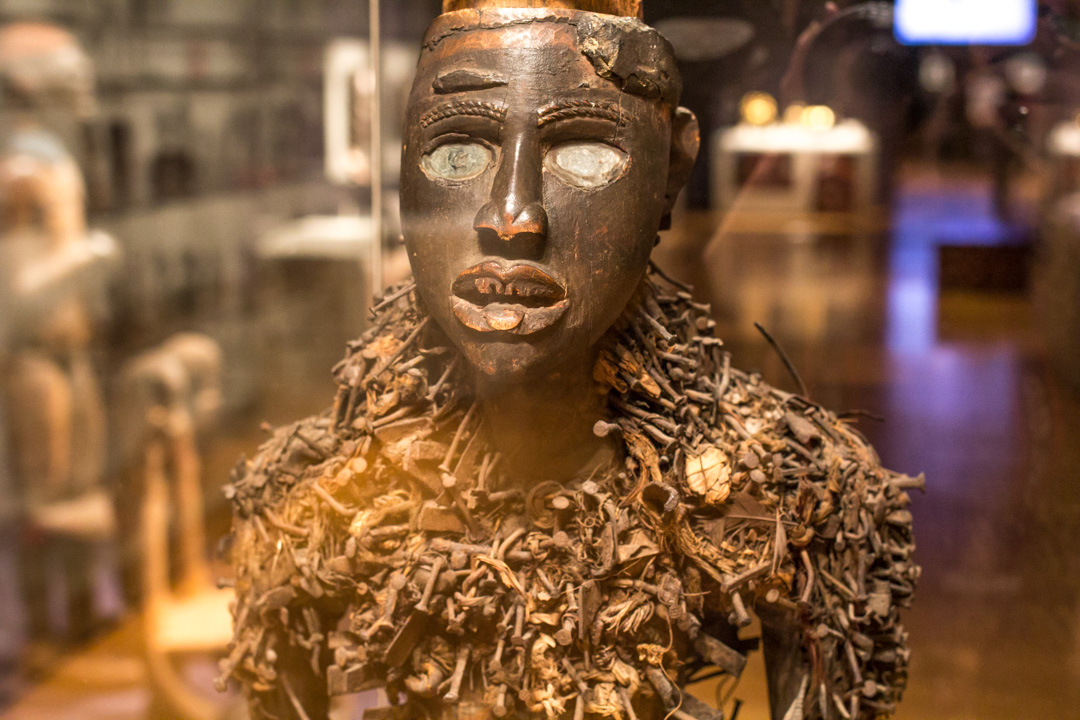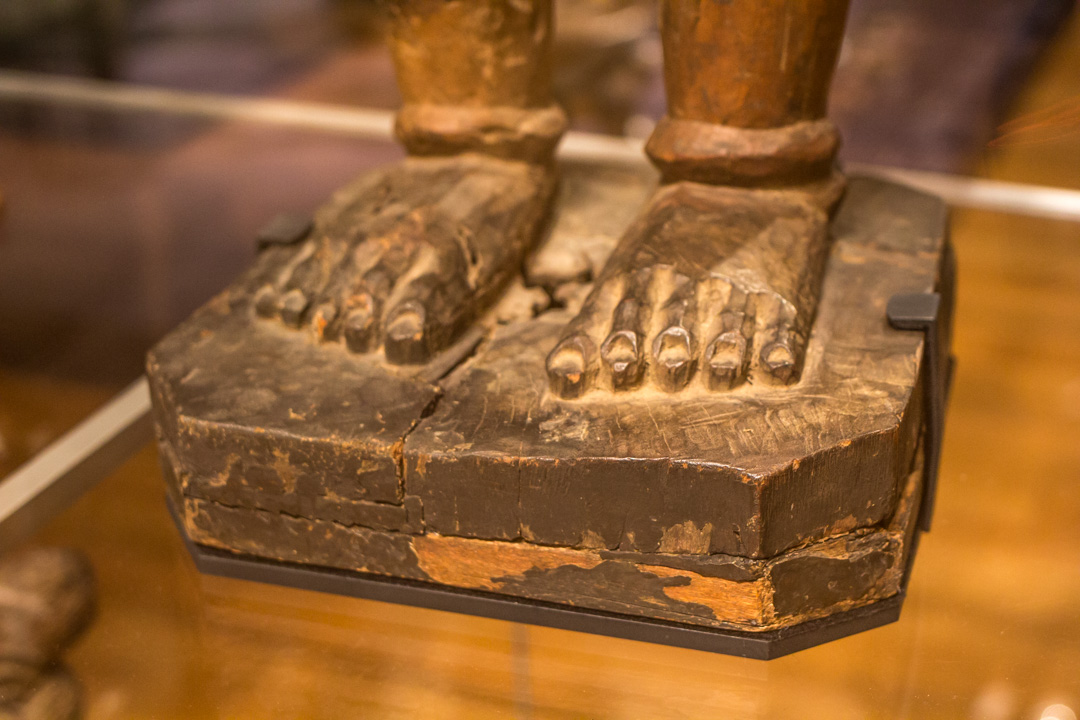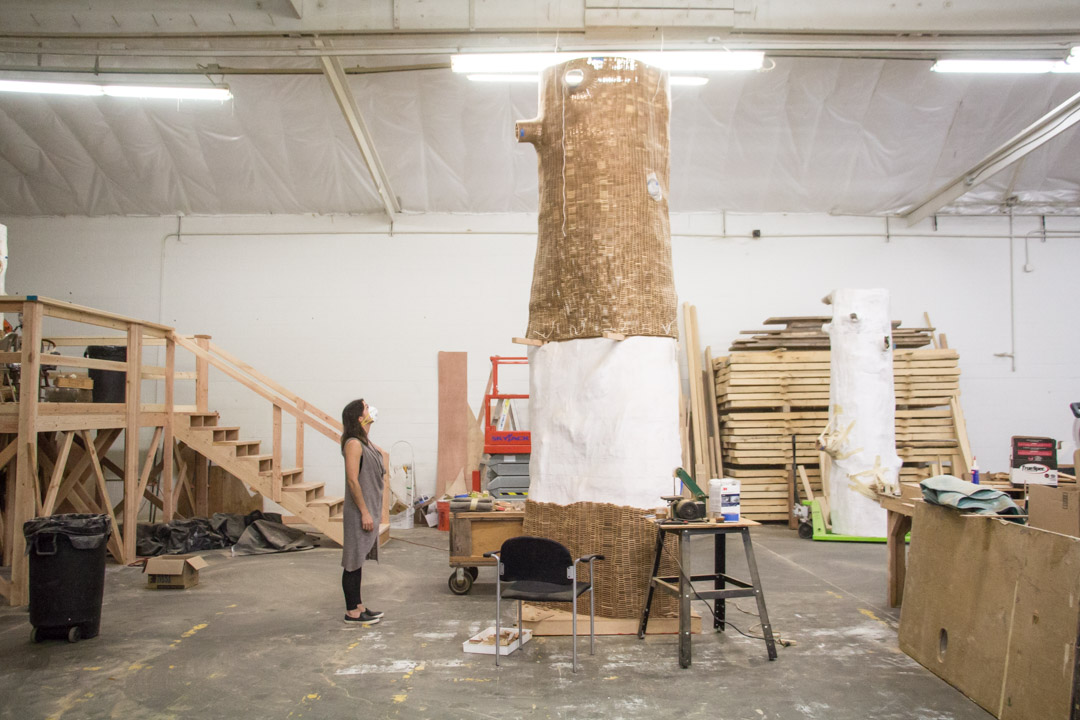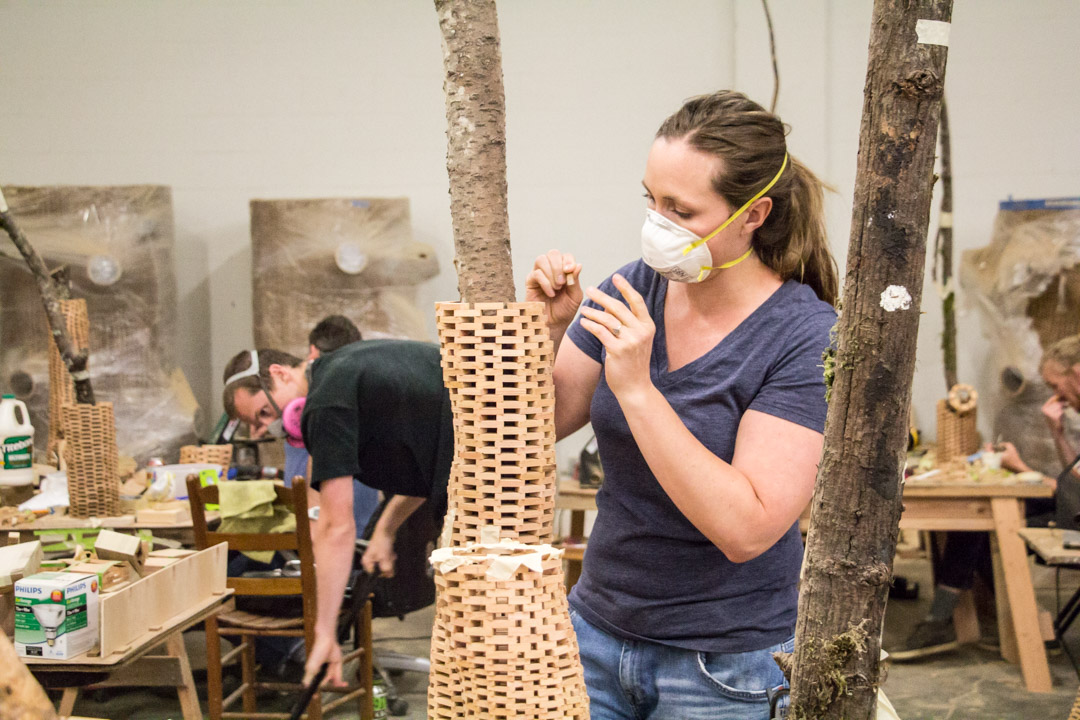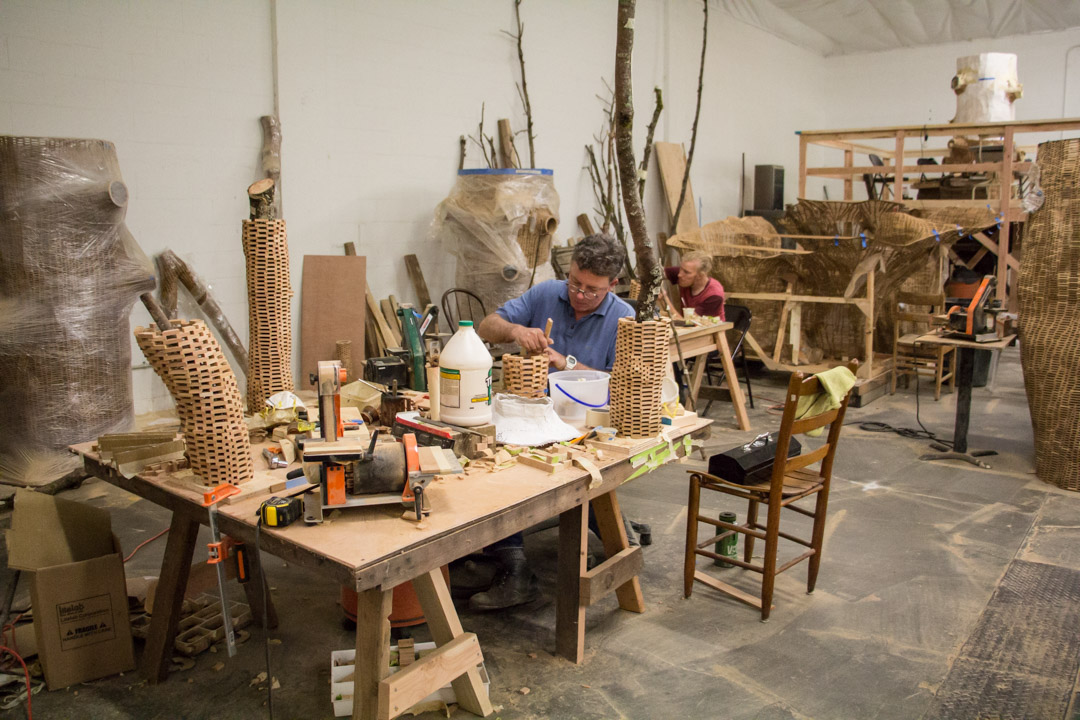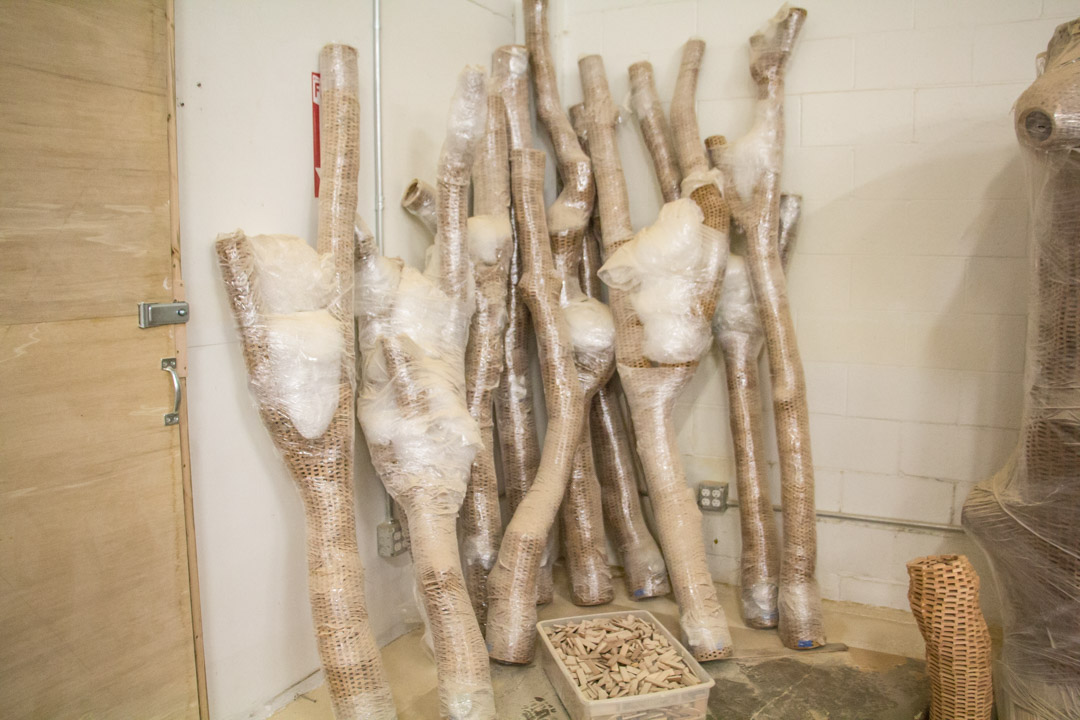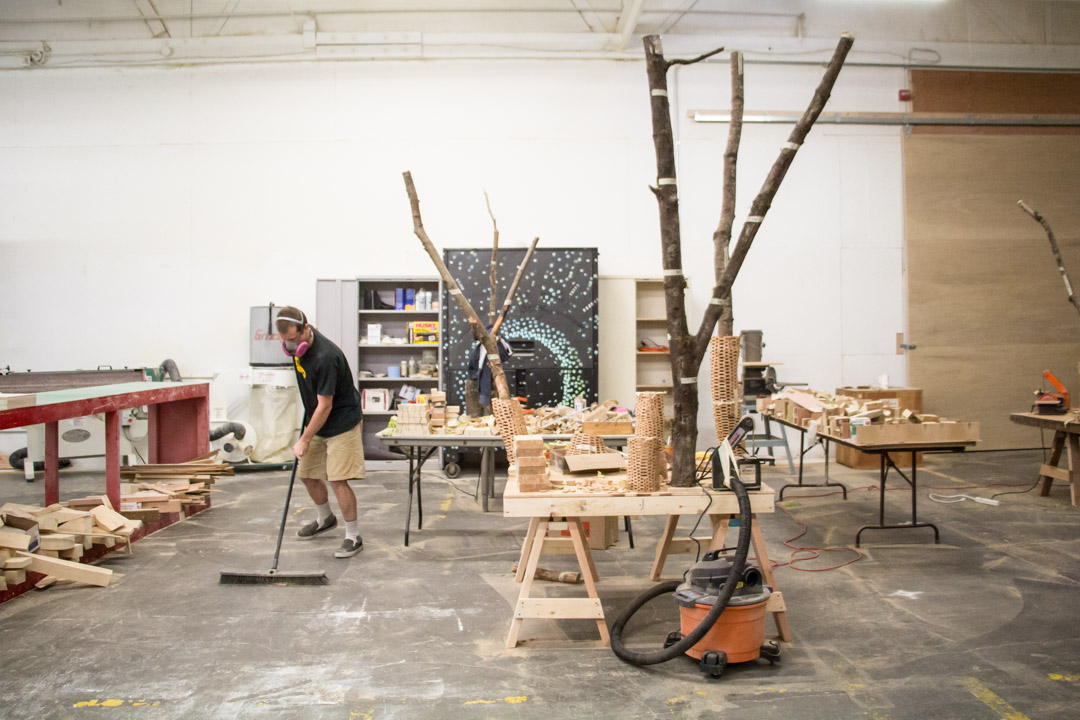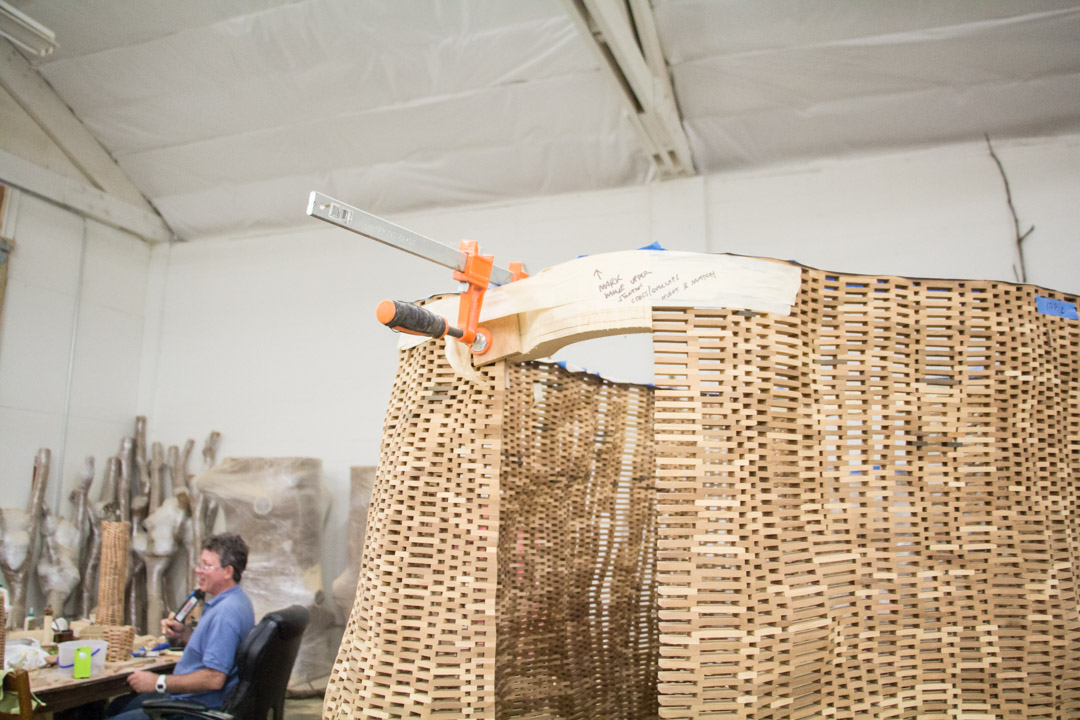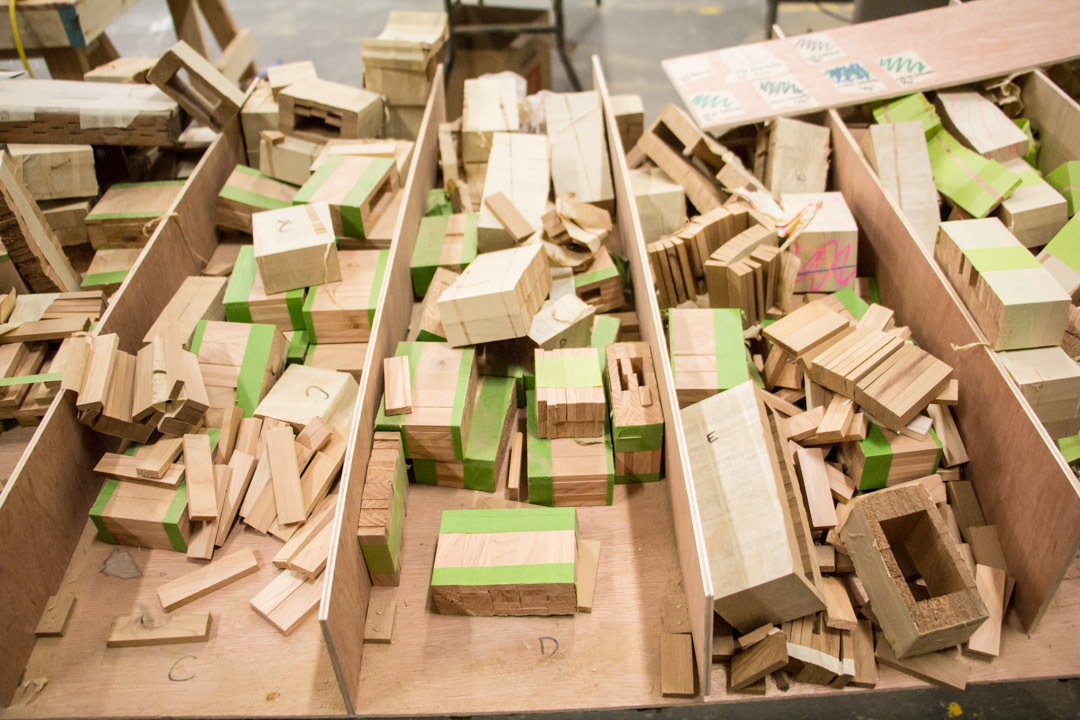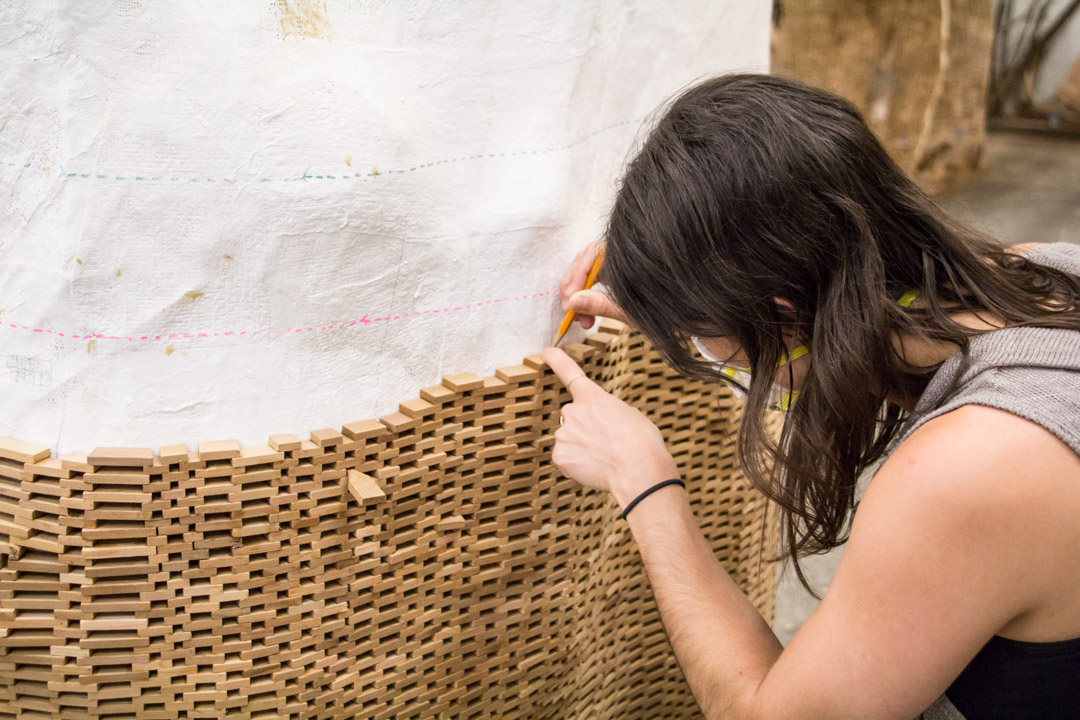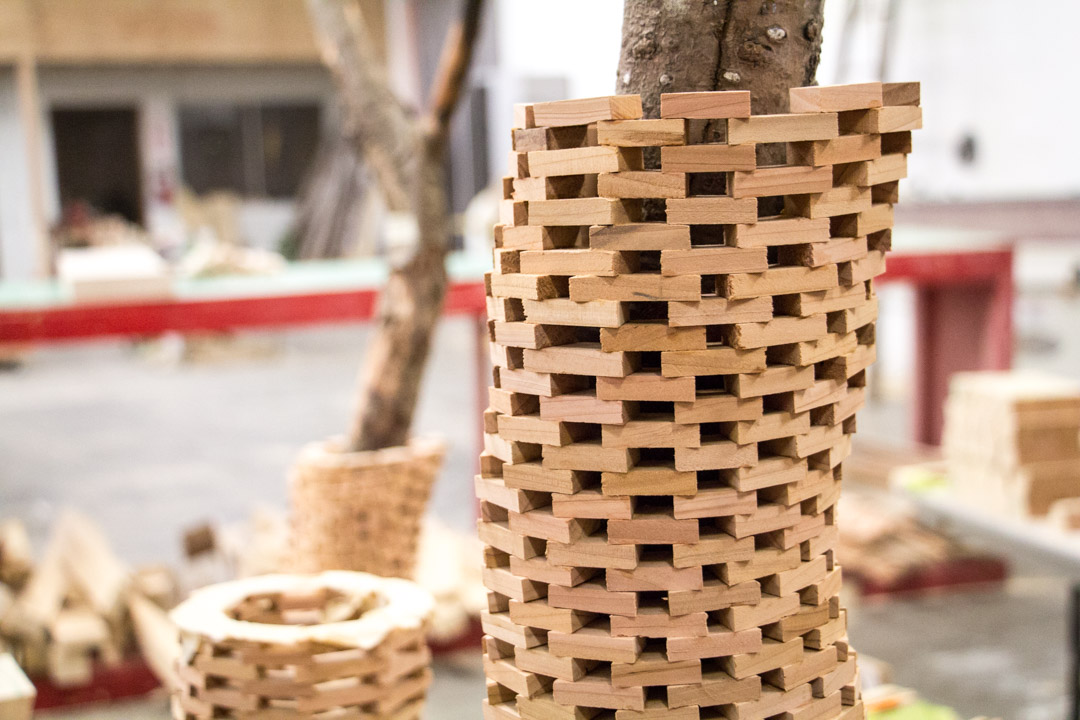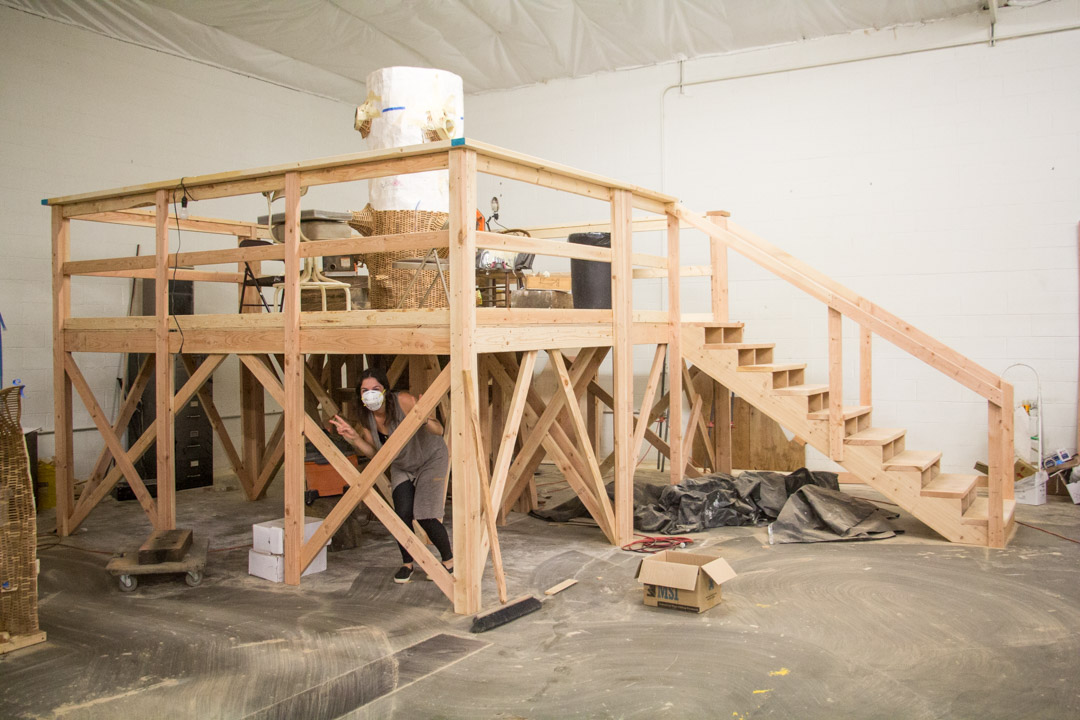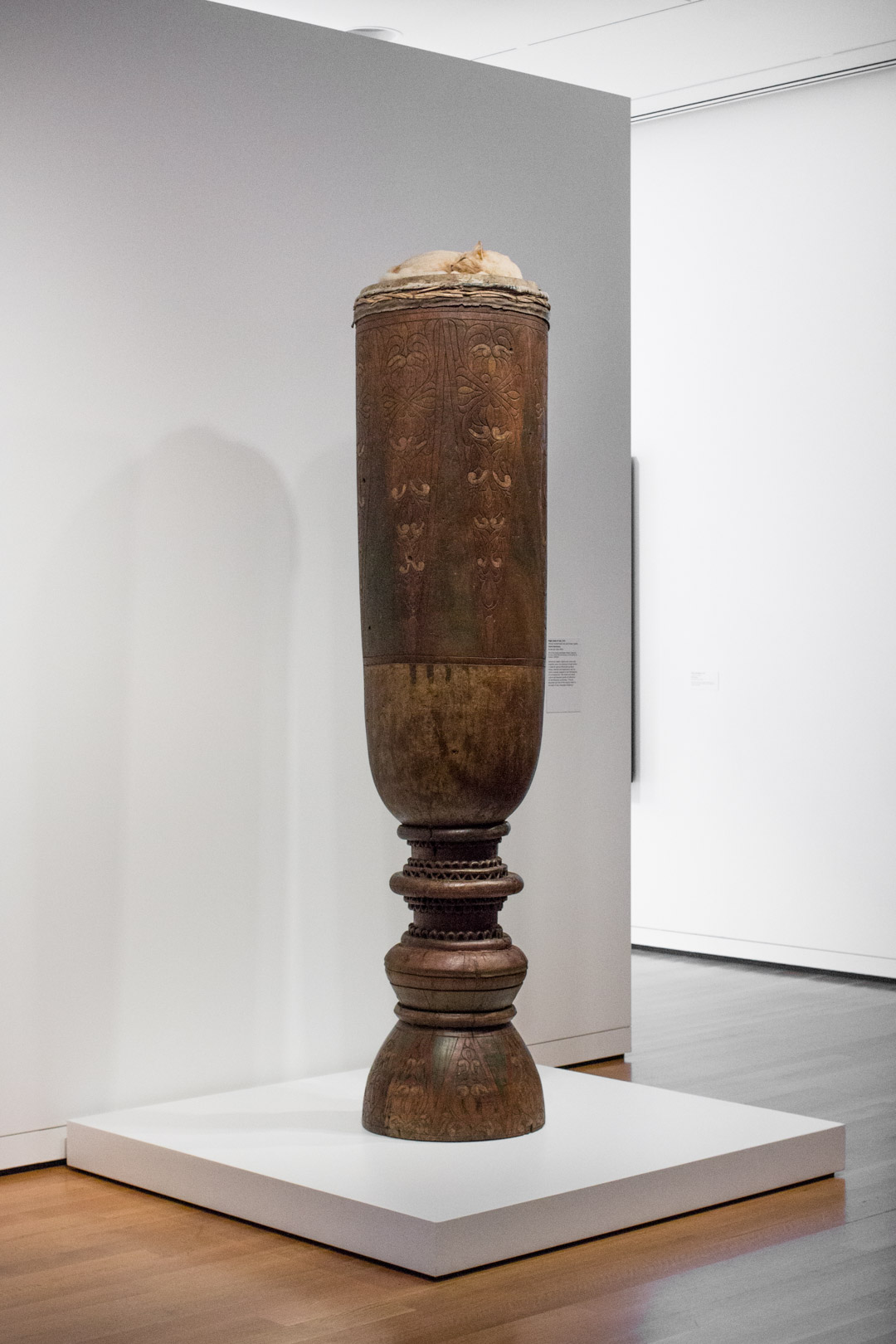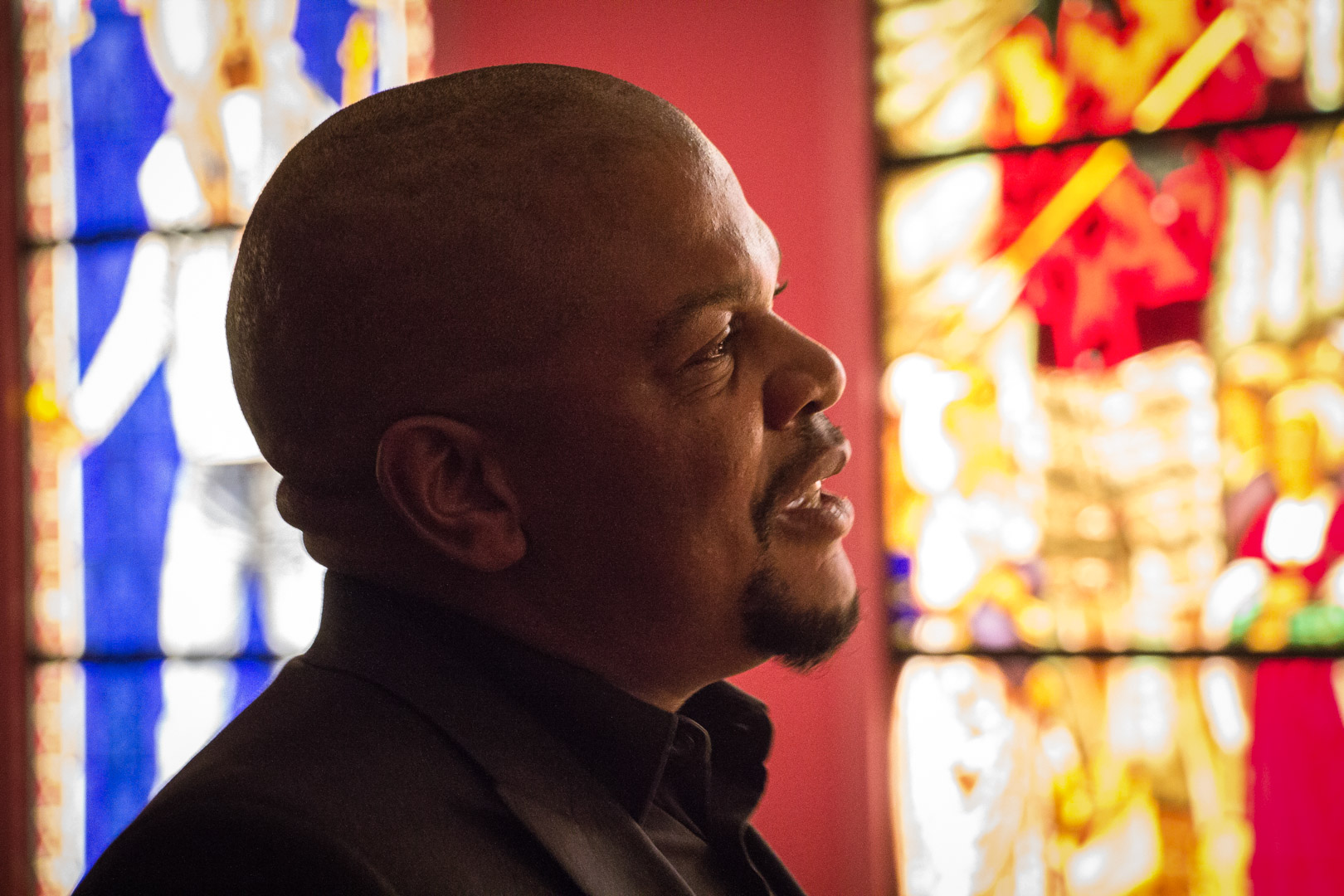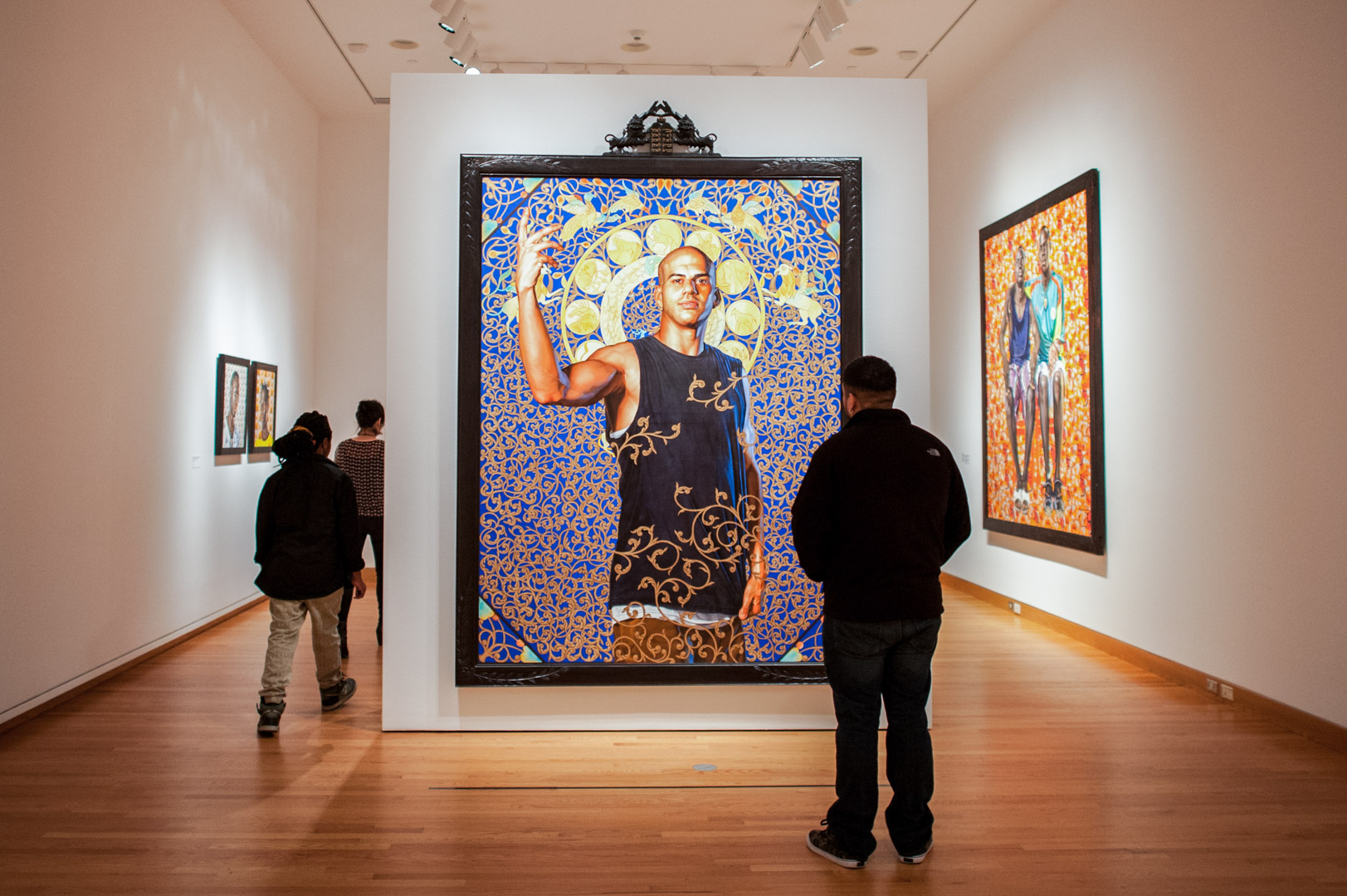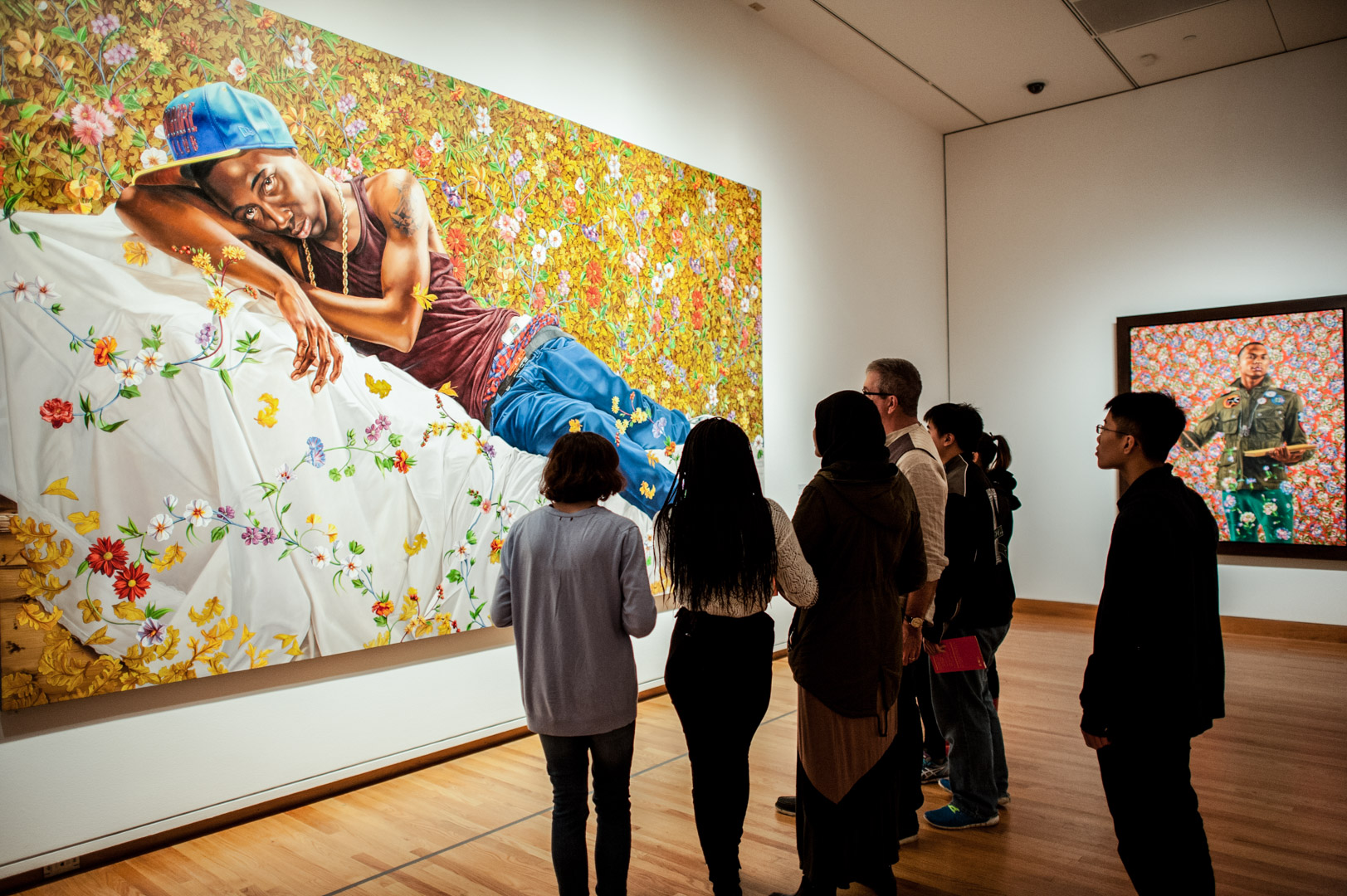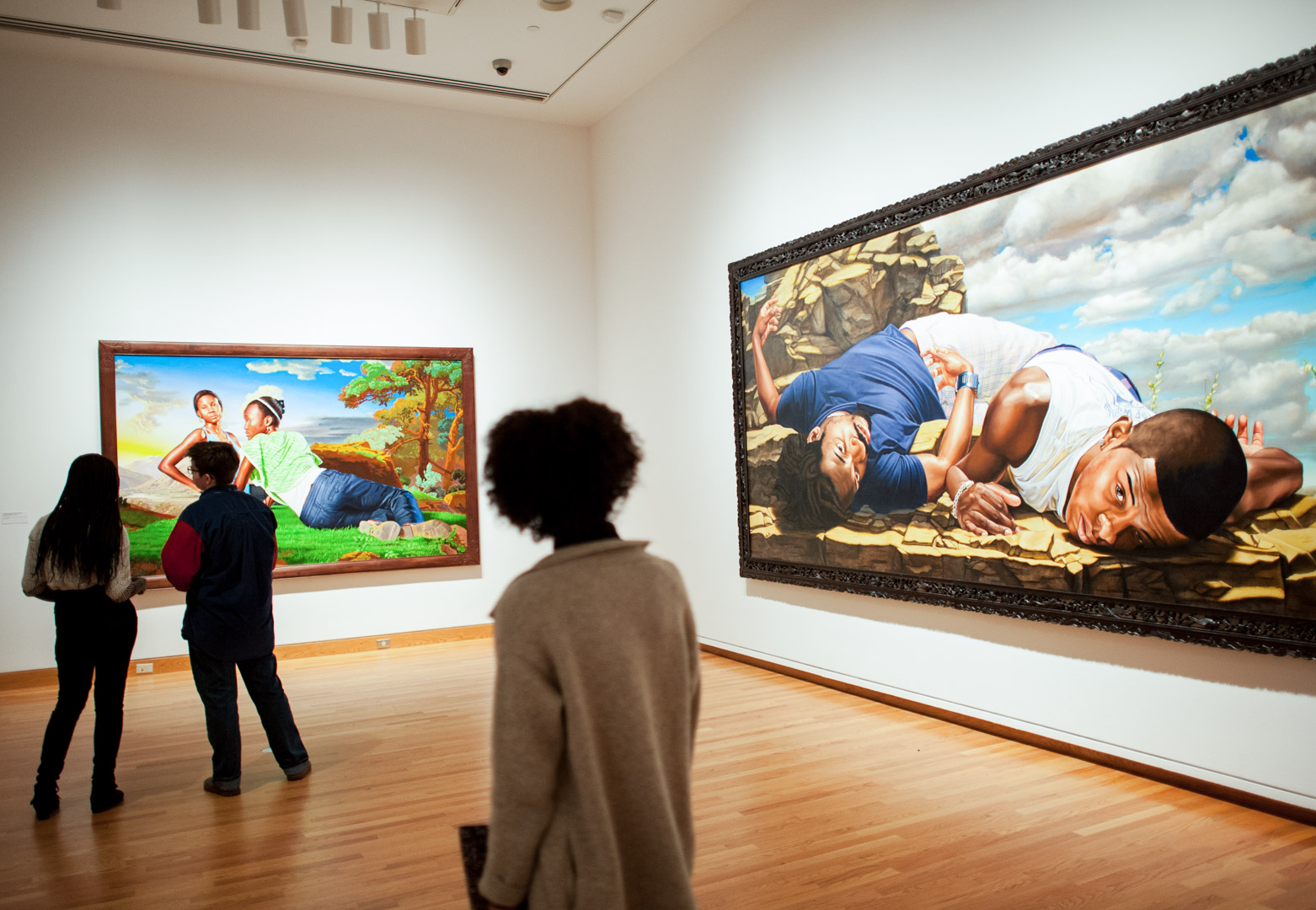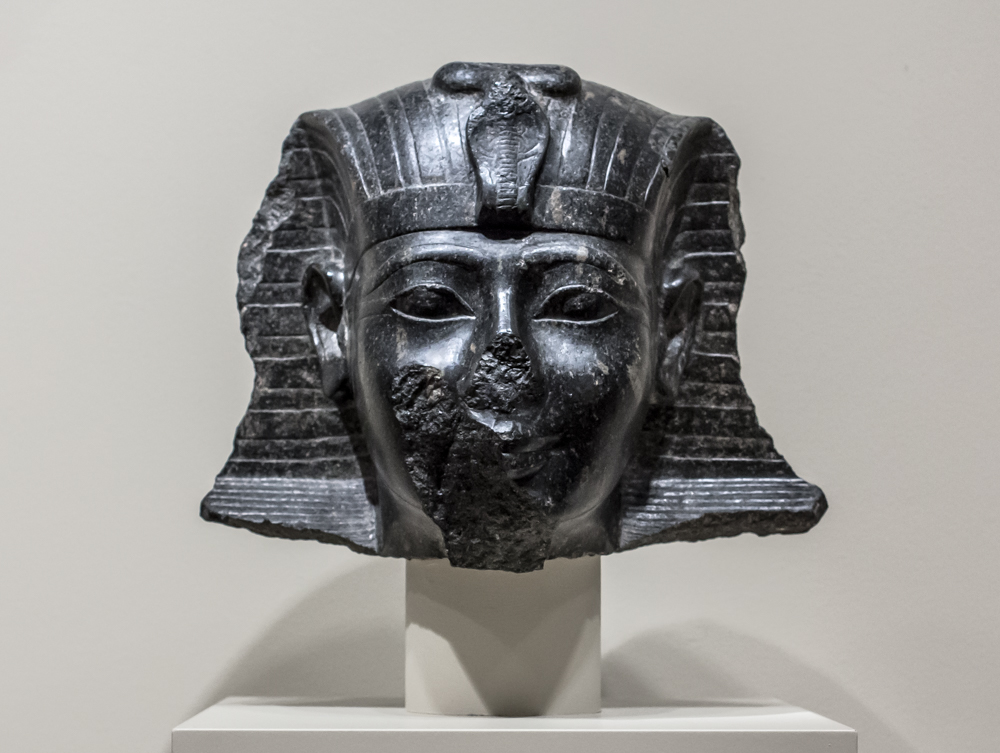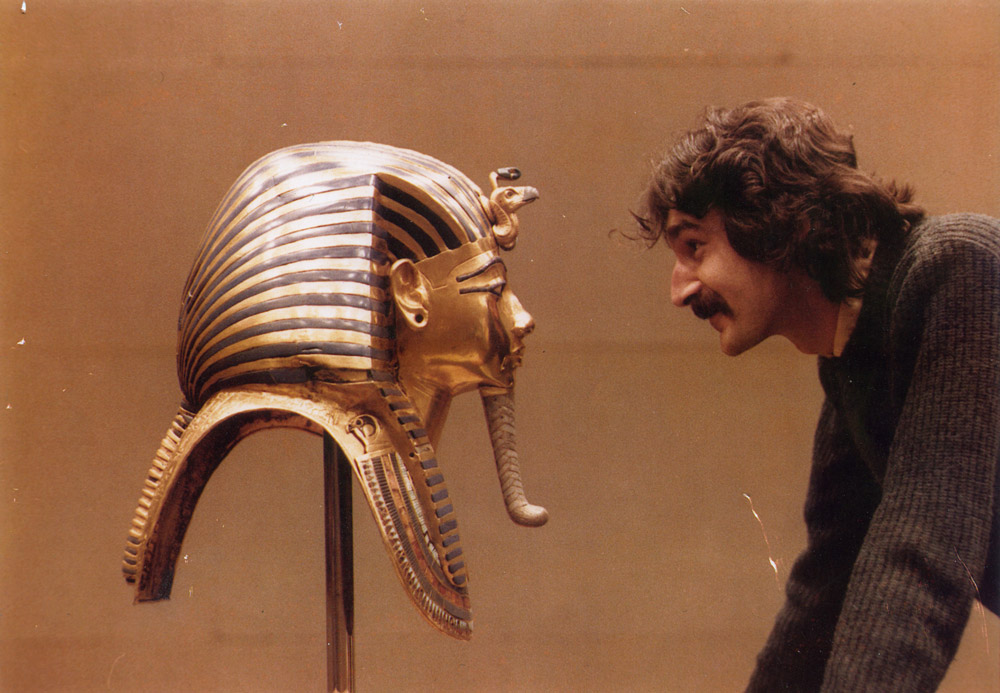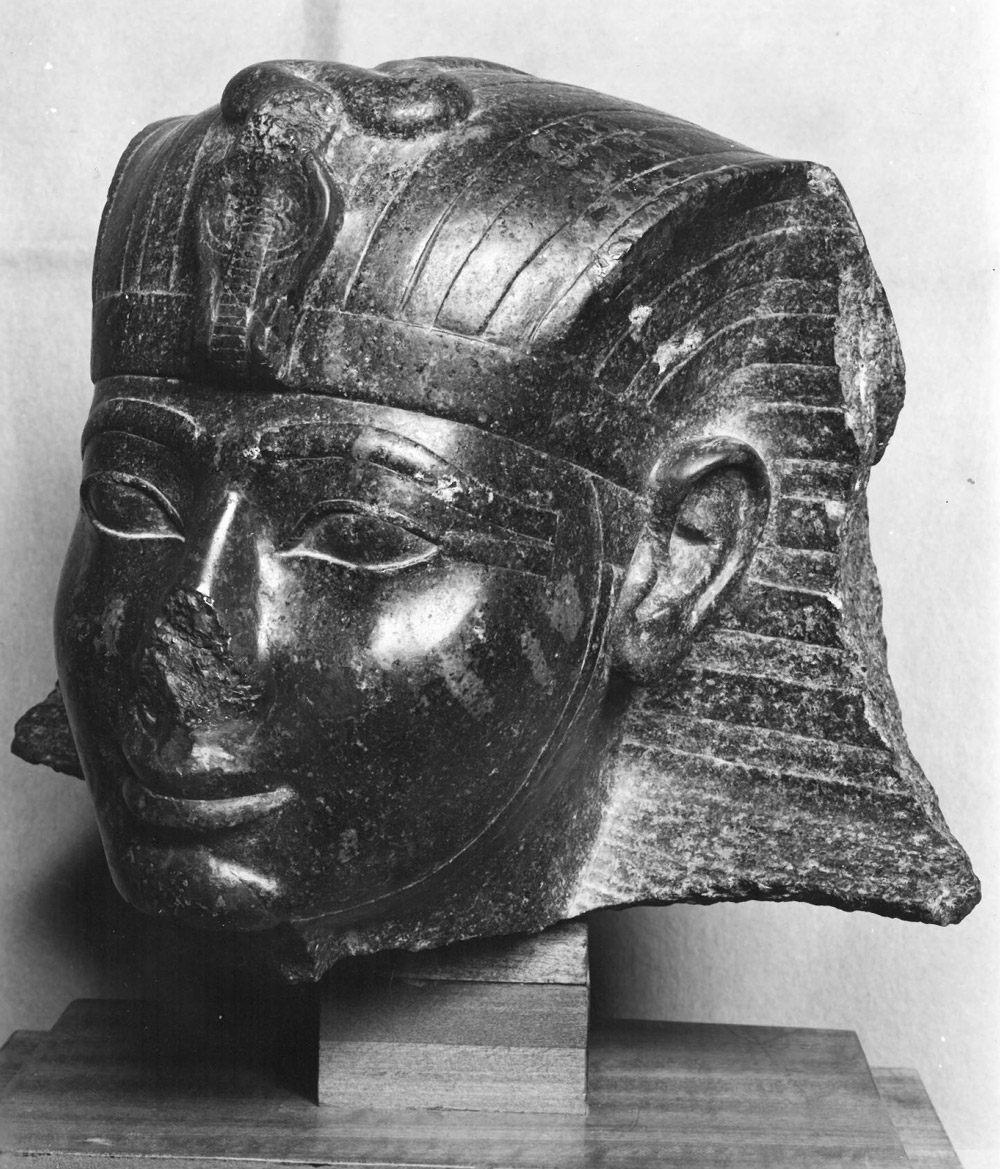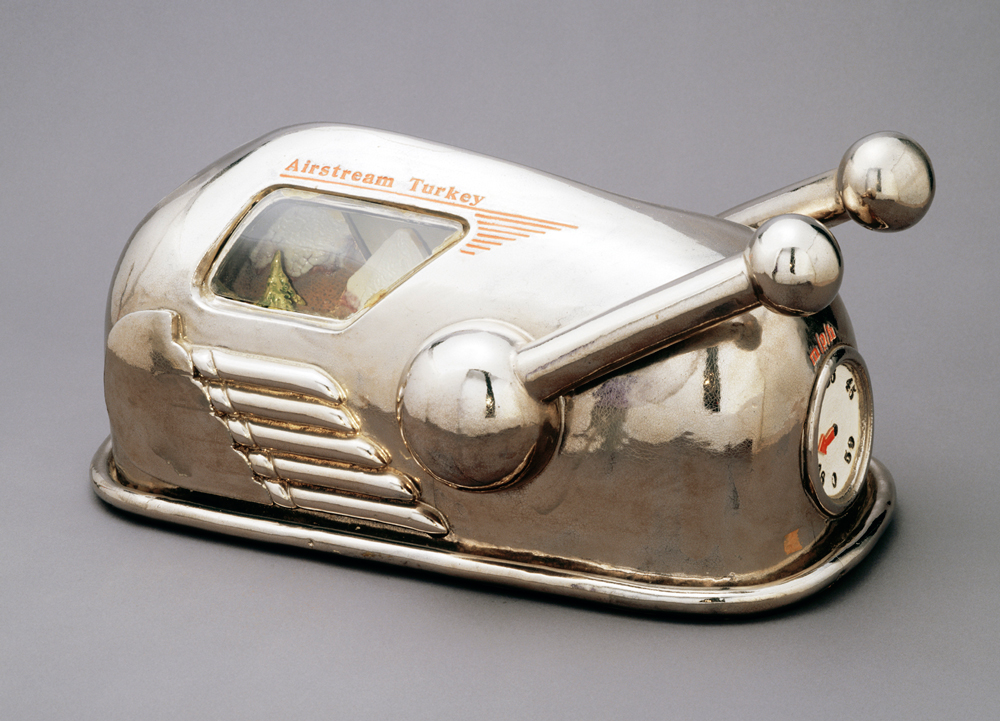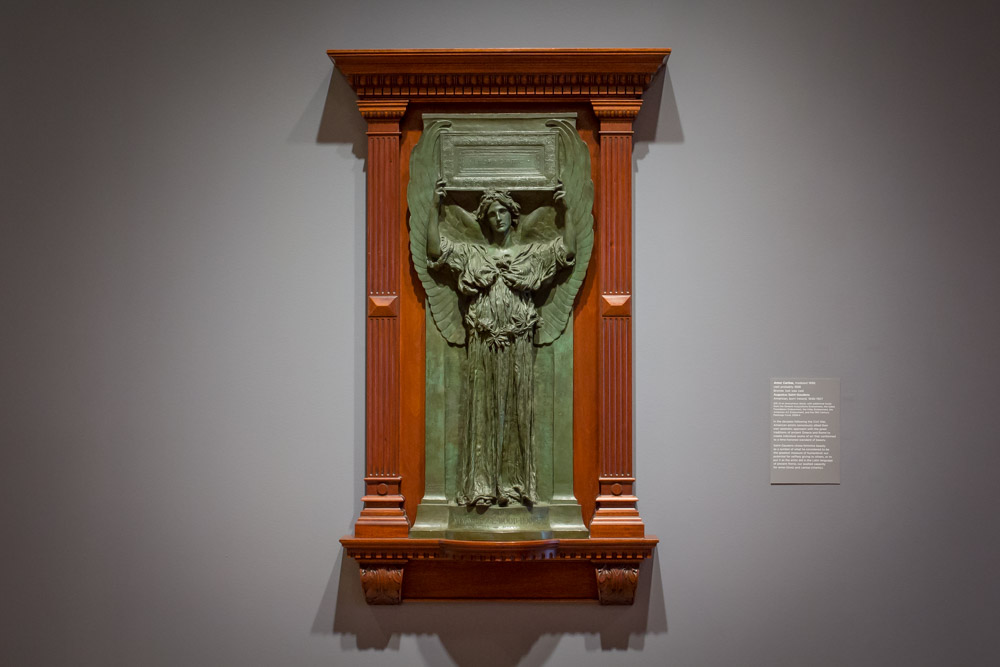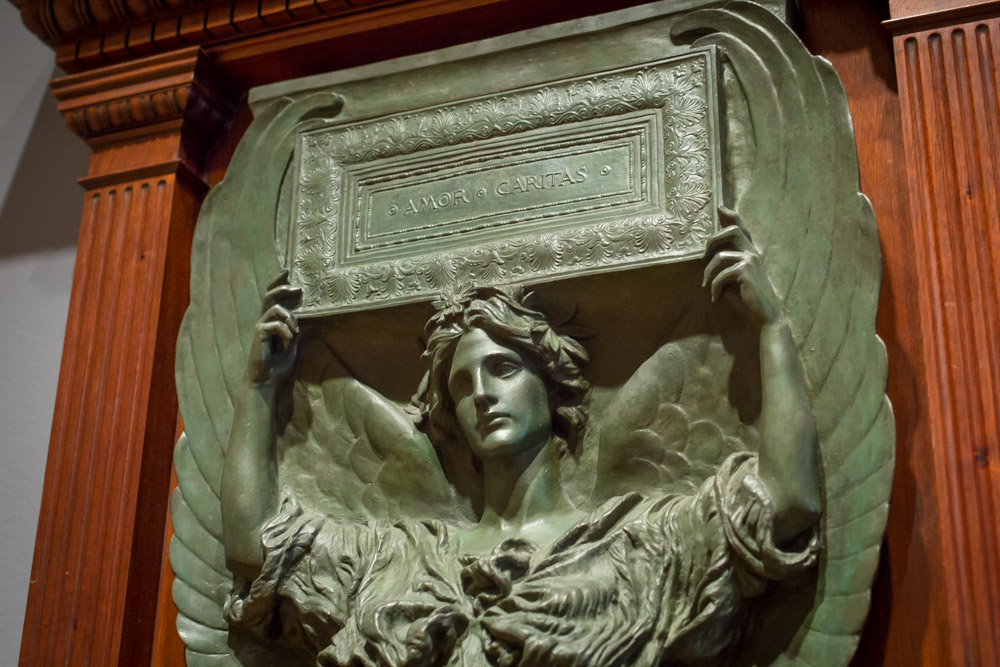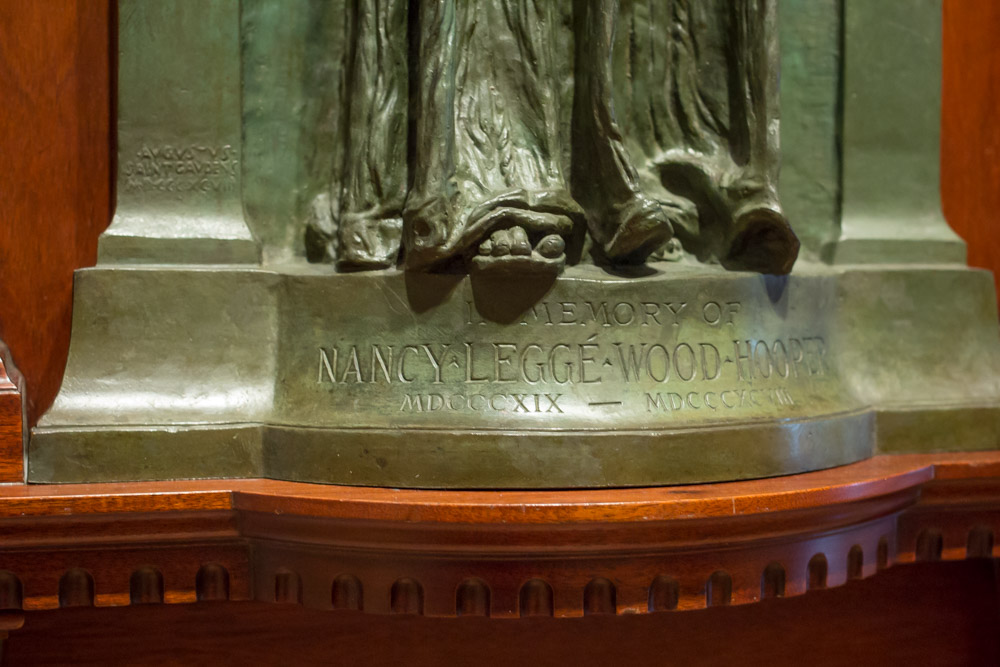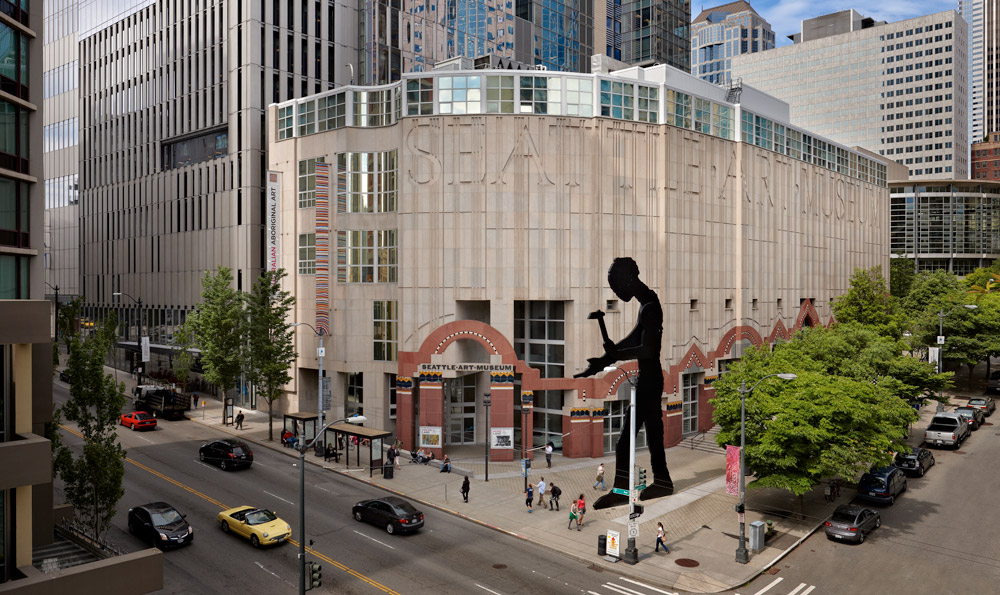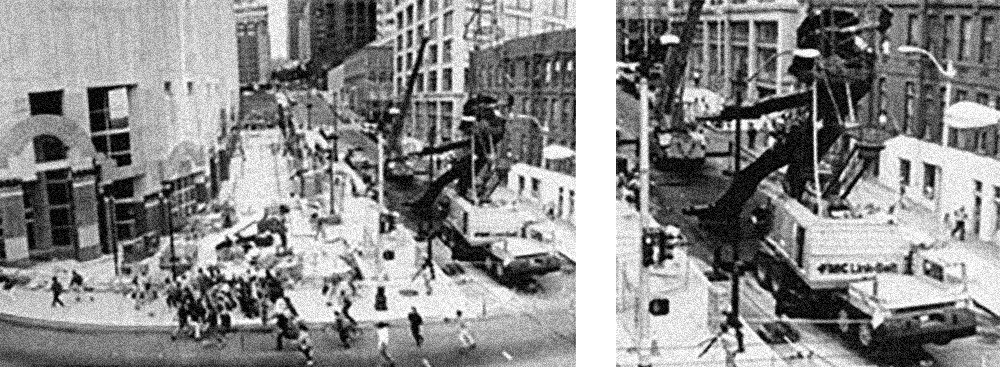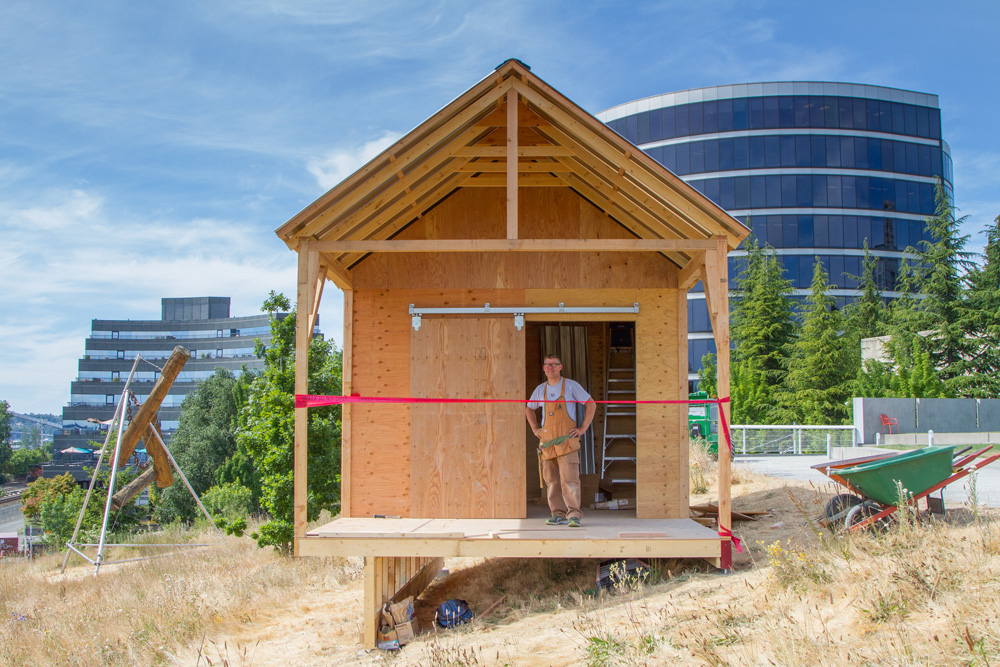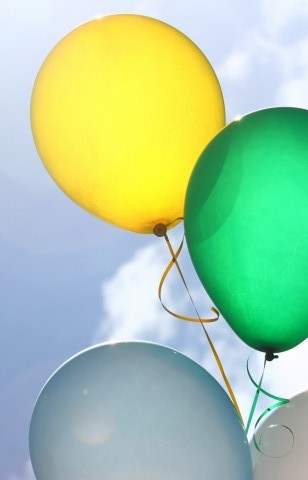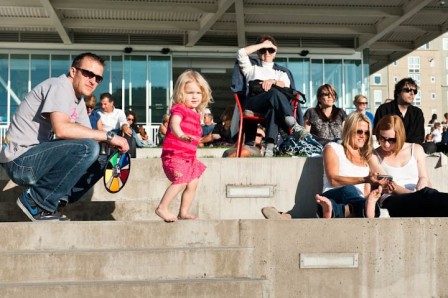This summer, Seattle artist Dan Webb will set up shop at the Olympic Sculpture Park. In a small wooden shed, he will gradually turn a tree into a procession of carved sculptures. He will continue to carve until nothing is left but sawdust.
The ephemeral project pays tribute to the natural life cycle of the tree, which will come from the sculpture park—our chief gardener has selected one that needs to be thinned for the health of the grove. The tree’s seeds will be preserved and planted in the park.
We talked to Webb about his project—and what making art means to him.
Note: Selections from this interview appeared in the SAM magazine for June–September 2015. This is the full interview.
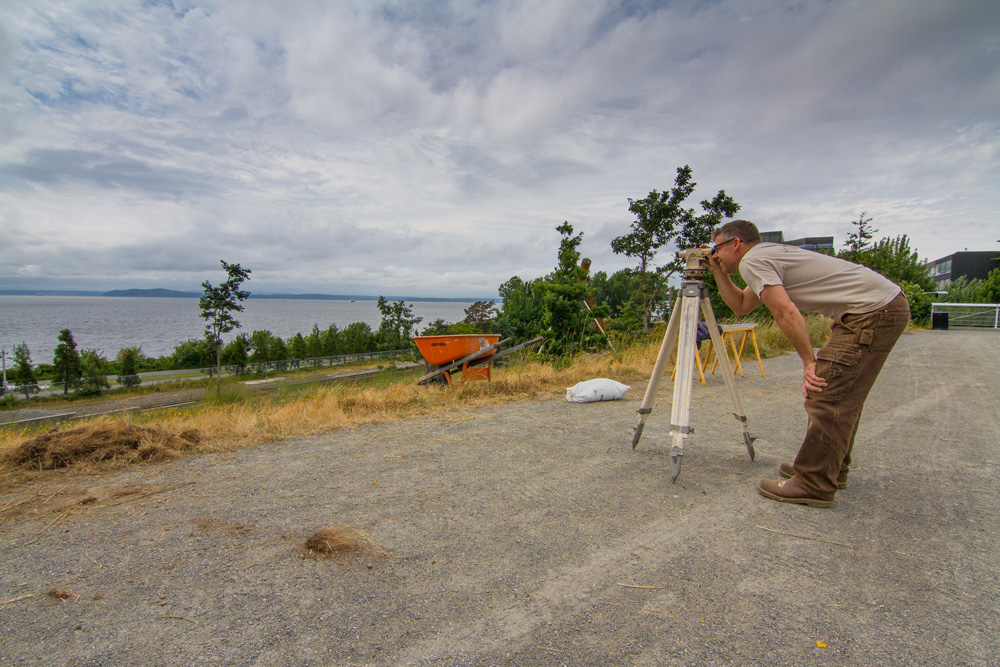
SAM: This summer, you’ll be spending two months carving sculptures out of a tree but I hear that none of the works you make will be kept. What motivates you to do this? What’s your thinking behind this?
Dan Webb: I think it really talks about a certain ephemerality to most things that everything lives for a while. I mean, even if you look at the acropolis or something like that, it’s melting because of the rain and such. There are these things that we’re able to make but we’re not able to make anything that’s permanent. So maybe the conceit of sculpture is that you can hold on to a moment for a bit but a lot of my work really references the idea of time and the idea of a cycle, that you’re born and you live and you die and that just starts another beginning.
And I think wood is a great material to do that with. You know, it’s a material that was alive and is no longer. There’s a way that you can really talk about those kinds of systems, the falling apart and then coming out of the ashes and falling apart, that just seems really natural in wood. You don’t have to reach very far and it doesn’t seem mockish or melodramatic.
The work to me is on the one hand is quite light-hearted and fun and on the other hand is very much about entropy and death and stuff. I feel like that material spans that emotional distance really well. I do want all of that stuff kicking around in there somewhere.
SAM: Something that occurred to me while looking at this project and some of your other work is that you start with block of wood and you start carving. And with this project, you’re going to keep carving until—
Dan Webb: Exactly.
SAM: —you can’t keep carving anymore.
Dan Webb: Right.
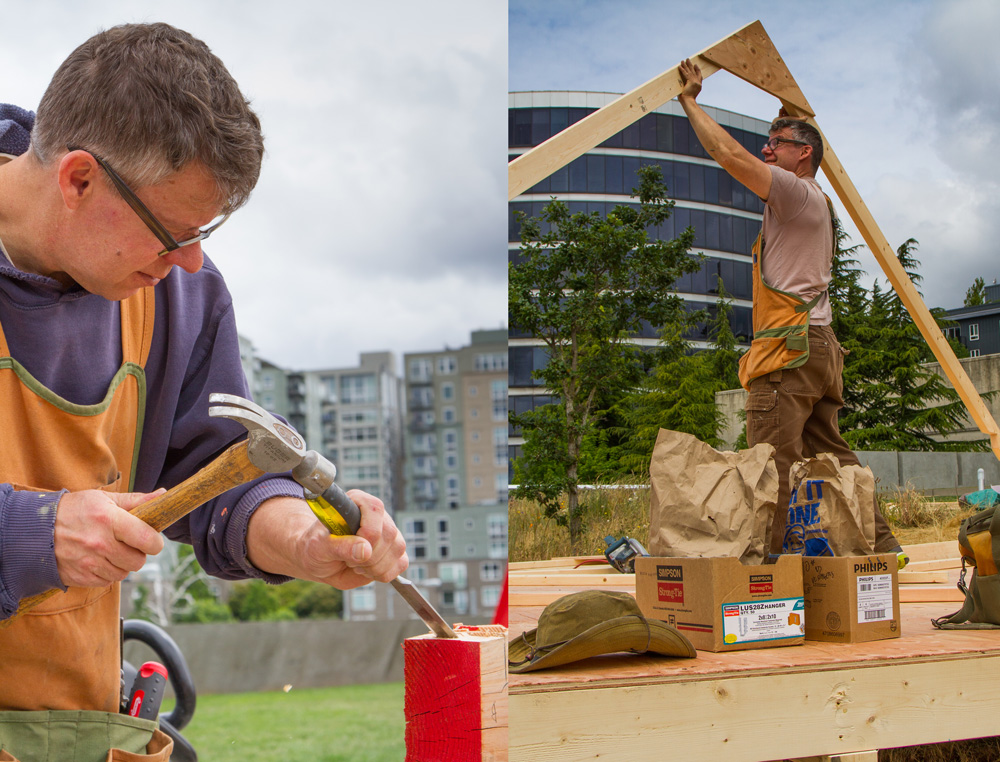
SAM: This is unique to carving. That if you keep going, your medium will disappear. If a painter just kept layering on paint and paint and paint and engaging in the process, his material would get thicker. His canvas would eventually get thicker but yours will eventually disappear.
Dan Webb: Exactly. Yeah, it’s very much a reductive process—it’s something you think about. It’s something you notice as you carve, you know, that every time I take a little bit off, there’s very much a reference. It’s not a metaphor. It’s very much like a tick of the clock. There’s a little bit gone, you know, and that just percolates through the work.
It’s hard to keep it away so that’s really the beginning of it. I hope that doesn’t sound like a big fat bummer but it’s in there. But along that path of that life and all the stuff that I’m going to make, there’s all sorts of stuff that’s great.
You know, I’m really already planning on making a salad set for the table that I’m supposed to make in the park or making some kind of implements for people when they sit around their table and we have dinner in the park that will come from that tree [Dan is a featured artist for Party in the Park]. I want those things to really live a life and to be touched, to be in the hands of people and to go somewhere. That’s just one idea. There’s a few others too related to that.
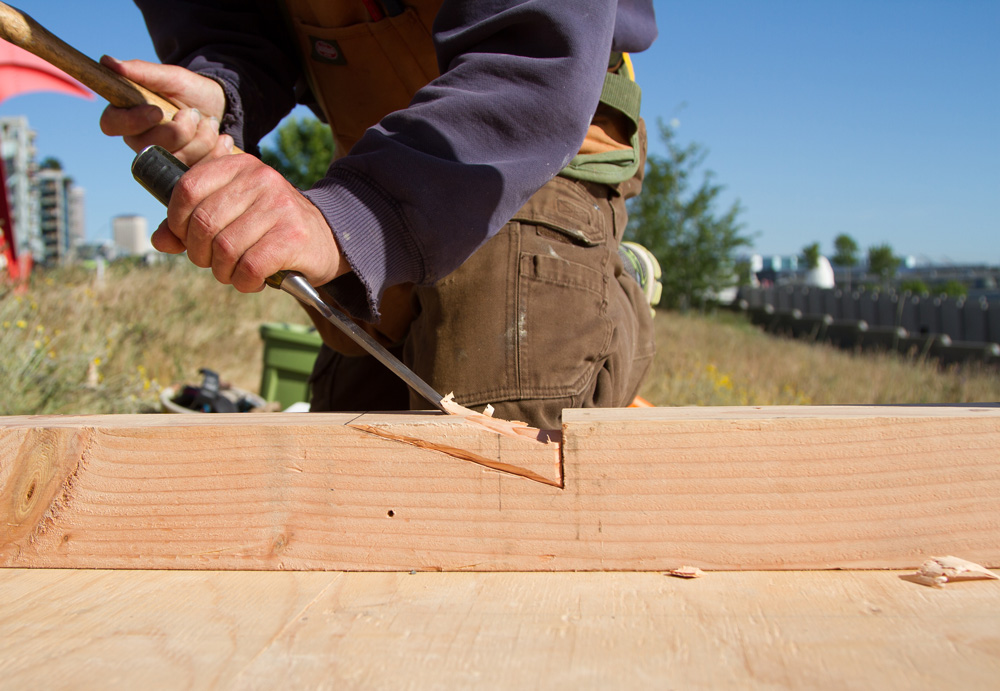
SAM: That’s one of the things I want to ask. How will you decide what to carve?
Dan Webb: There’s a lot of improvisation in what happens with a particular piece of wood and some of it is just—to me—sort of silly inside jokes.
I always think of the phrase “ripped limb from limb” because I make so many limbs out of the limbs of trees through what amounts to a whole lot of violence, really. That just seems so dumb and obvious, to carve a limb from a limb, but I can’t help myself.
It’s still great. Not really worrying about the starting point is more of my process. The idea that [Marcel] Duchamp had of chance—the standard stoppages and all that kind of stuff of making, building into his process the way that he does—he isn’t really sure what it’s going to be. I’m sympathetic to that way of working.
I think illustrating my deep thoughts on things as they are would be a whole lot less interesting than discovering things along the way and being sensitive to the serendipity of certain shapes, certain ways that the wood seems to be doing certain things. Just listening to that makes it more than I think I could plan for it to be.
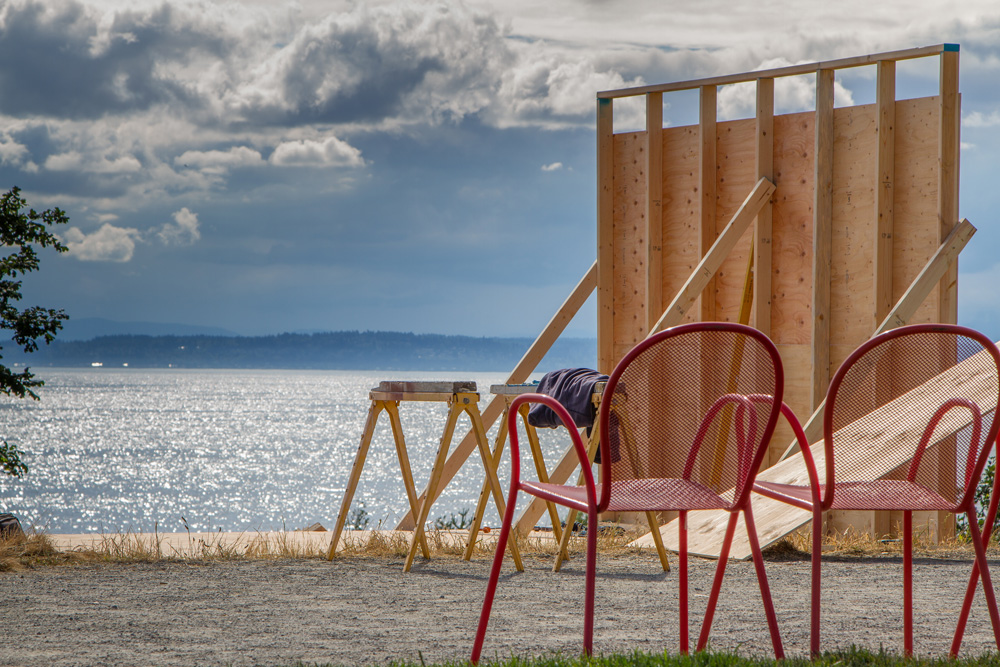
SAM: Is there a point in the carving where you either discover something and your path forward is set or because you get to a point where you’ve made enough decisions that you’re now limited—?
Dan Webb: There is a point at which it’s set. I’m starting to make things where I take a single block and I start cutting chunks out of the block and carving different things from them with a simple joint at the top, a dove-tail joint, and then sliding all those things together that I pull out of the block.
And I’ve found that it doesn’t take very long before there’s something going on with that initial piece that leads to the next piece and then I’m trying to really find that in the block. I’m trying to make sure that I can find that in there. So while there’s improv, there’s also me trying to exert my will on it. There’s a tension between the two.
SAM: We tend to think about the artist as a solitary, isolated figure. I read somewhere that you work in a studio in Georgetown with other artists so you aren’t necessarily that on a daily basis anyway. But now you’re bringing your studio to the park, which is this very public space.
What are your expectations? Why are you interested? Are there things here you’re excited about or worried about?
Dan Webb: Yeah, I know. Well, I think that really has to be part of the work. I am really interested in Robert Smithson’s work, Partially Buried Woodshed, that he made in the 70s. I got a chance to see it actually. It was a woodshed where a bunch of woodworkers were and he poured a whole bunch of dirt on it and left it and it rotted. His work was really about entropy and everything like that. But I was really interested in what happens to those woodworkers inside of that. I know he pulled them out before he poured dirt on it—but the whole idea of what happens to the people, and how do people fit into that work, and his thinking in some ways informs this piece.
I’m very much the woodworker there in the shack. The activity of it, the pretty slow quotidian boringness of it will be on display, as well as the conversations I’ll have and all the rest of it. I hope that’s very much a part of the work.
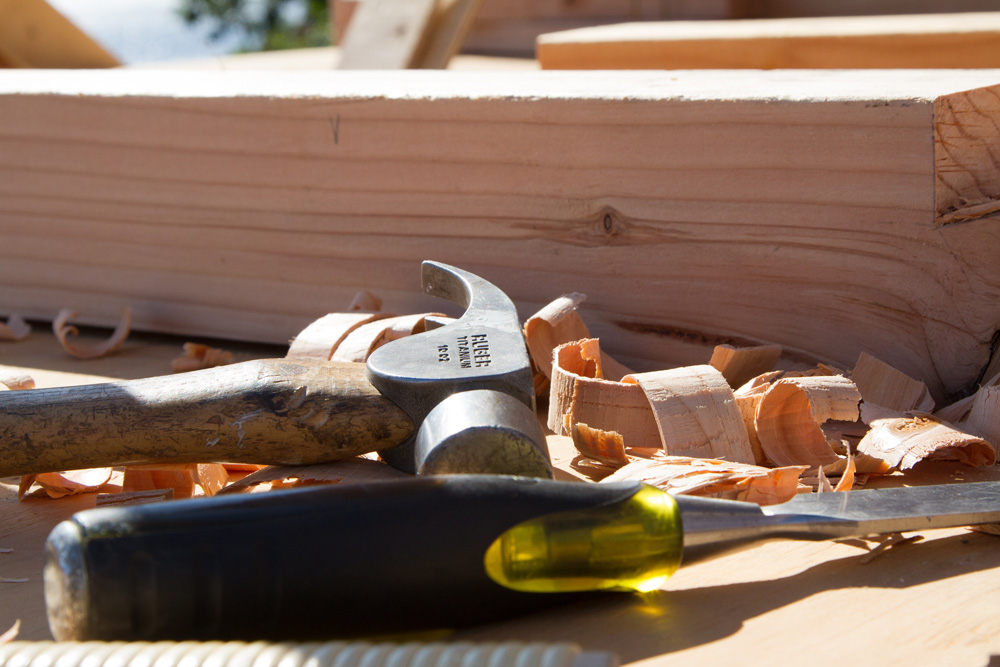
SAM: What are five things you’ll bring with you? What do you need to work when you’re carrying your studio with you?
Dan Webb: Well, I’m going to have a rolling cart that I’ll have to roll into the shack from the pavilion and roll back at the end of the night because there’s—I’ll probably have fifty or sixty chisels with me and saws—a lot of stuff will be required to do this. So I’d be pretty stumped if I had to think of just five. A cup of coffee, my toolbox. What else? What else do I get? Is that two? Technically I’ve already listed more than a hundred because of the tools so I better stop. I’m cheating already.
SAM: I want to ask you about some of your influences and I have to be honest—I’m hoping you’ll talk a little bit about Robert Morris’s Box With a Sound of Its Own Making.
Dan Webb: Oh, yeah, which I just paid homage to ten minutes ago. I love it. I love talking about other people’s work. Well, it’s just a towering work of genius, first of all.
I think what it does for me as a maker of things—it really says that there’s this life lived by someone who made that thing. That new object was brought to this place by a person who thought things through, had all these problems to solve, and was having a hard day that day, and told a really hilarious joke at lunchtime to his friends.
So there’s that really clear, awesome humanity to it.
The other thing too that becomes maybe even more important than the piece—the physical artifact really takes a backseat (maybe) to the idea, to the circumstance, to the context. There’s a lot of things that go into it and the object becomes the artifact of that.
I think about that when I look at the Michelangelo “Slave” Series as well. It’s not that they’re finished or that’s even important. They’re sort of struggling to get out of this block environment. But you can just see his chisel. More than any other piece that Michelangelo made, you see these tourists just running by these things in Florence. Nobody looks at them. I was the only person.
You can see the chisel marks and you make the connection that there was this funny little shrunken dude who was making that stuff.
It seems to be pretty profound to me that there’s the things that you think and feel and hope for. And then there’s the artifact of that life—which is your work. Not forgetting that, not ever forgetting that, is really important.
SAM: That art is made by humans.
Dan Webb: Art is made by humans who are muddling through, and trying to make sense of it, and the issues are pretty much the same [then that they are now].
I think with a lot of other work, before I saw Box With a Sound of Its Own Making, it was harder for me to access some of that stuff. It seemed like this thing had just arrived—rather than feeling like there was a context for why that thing existed or there were conflicts and difficulties with them, which leads to it looking a certain way. You have to grapple with the thing.
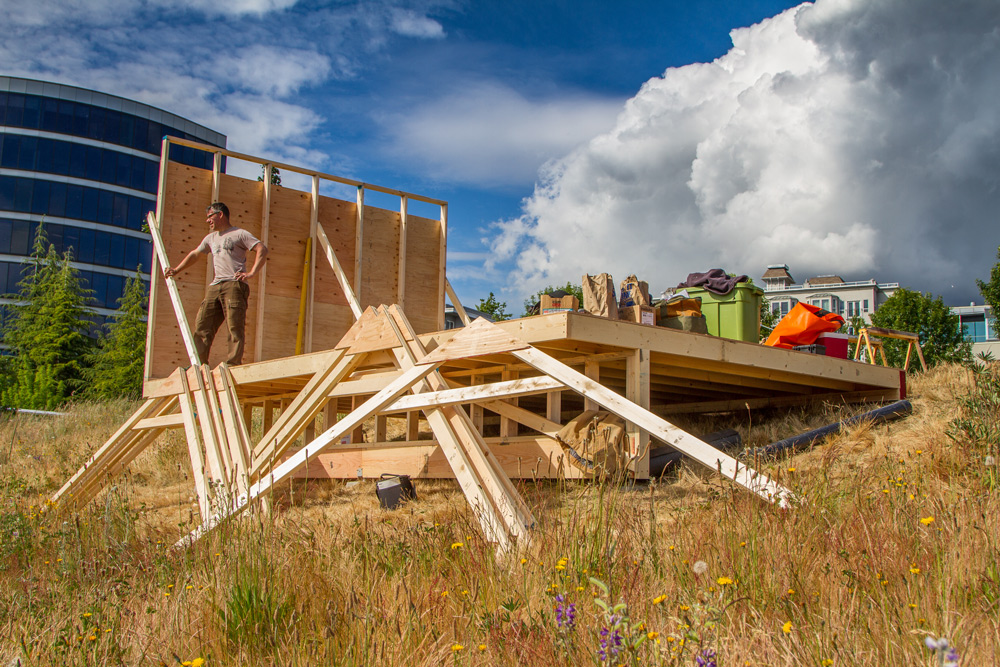
SAM: How do you define mastery?
Dan Webb: You know, that word is a real—whenever I hear that word, I think of Caine in Kung Fu or something like that, an impossible TV black belt in a Shaolin temple. I don’t know.
I know that it’s easy to point to history and say well, Michelangelo was and Bernini was and Sam Maloof was. You could point to these people but I wonder if they would say that. I wonder if any of them—I bet they were champing to get to work so that they could get a little bit better that day, the day that they died.
I think at best what you can maybe access is total effort. I don’t know that a lot of people understand what total effort is. It’s not 99 percent. It’s 100 percent and when you’re absolutely, completely—then there’s nothing left.
And to do that over the course of a long period of time, in order to get to a place where something like mastery becomes part of the question or part of the discussion—I think that’s a pretty awesome, gratifying thing. But I don’t know anybody that’s even come close who would say, “Yeah. Yeah, mastery, that’s me. Look up mastery in a dictionary and my picture’s right there.” I think the goal posts keep moving further.
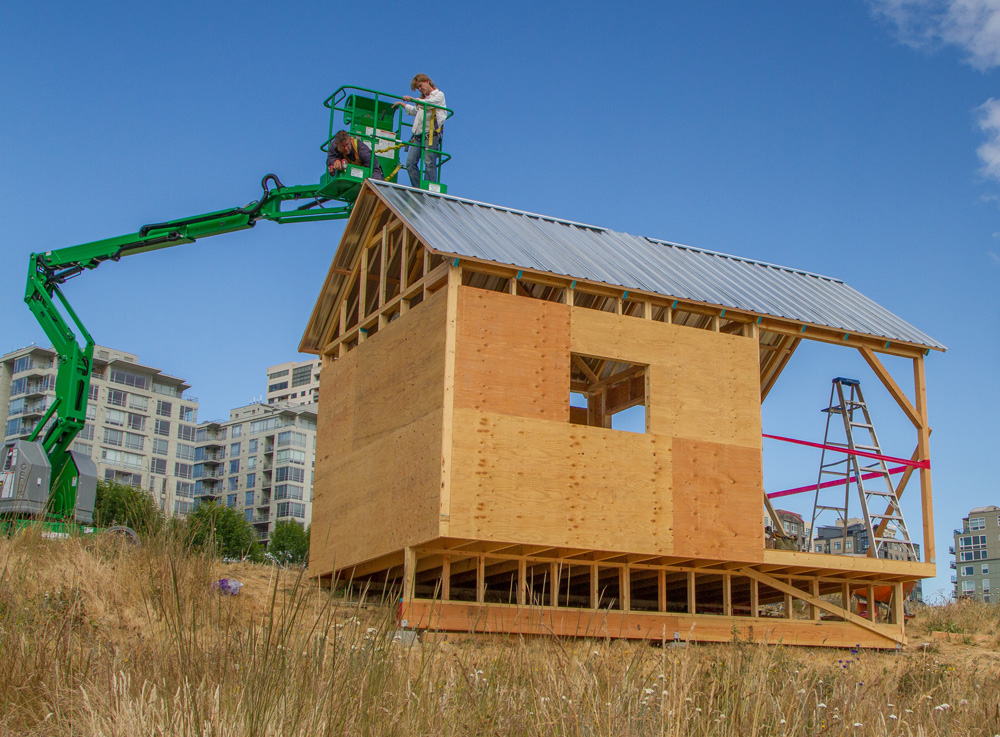
SAM: I have this—well, it might be sort of a sillier question but I know in this book, Jenni Sorkin provides one of the essays and writes that there’s this “uncommon sensuousness” of wood.
Dan Webb: Oh, right.
SAM: And I think romance novels and romantic comedies often cast their male leads as oh, first architects.
Dan Webb: Oh, wow.
SAM: And then often carpenters.
Dan Webb: Wow, really? Man, I need more of this stuff.
SAM: So I’m wondering if you think there’s anything to this romanticizing of wood.
Dan Webb: Oh. Oh, okay. I was thinking romanticizing carpenters. I sure was a carpenter a lot and they’re a bunch of smelly, gassy dudes that just told terrible jokes so I don’t know that worked with the ladies but…
SAM: Maybe it’s tied to this larger phenomenon where our culture romanticizes working with our hands at this point.
Dan Webb: I think we’re very, very much in that mode of romanticizing working with our hands. Nobody really wants to do it and nobody knows very much about it. But my wife is a farmer, for example. And there’s all these farm blocks where kids from Brooklyn buy a sheep farm in New Hampshire. Then they start a blog about it and the husband is always a guy who was a part-time model for J. Crew and he looks great when he’s holding the sheep and you just wonder if they’re making money or whatever. They’re probably not, you know, and—
SAM: There’s a trust fund behind them.
Dan Webb: Yeah, so I think now, especially with our super-curated lives that we can do on social media, I think it takes on even more of the patina, this luster. We’ve made chefs into celebrities—the beautiful food that comes out and it just seems like magic—but at the end of the day, who really does want to do that stuff? You know, who really wants to castrate sheep and feed a hundred of them and shear a hundred of them? I mean, that’s a small herd.
It’s pretty romanticized, I would say, and I don’t want to be privy to that. To me, it’s a job, which is totally awesome. I’m super lucky and grateful that I get to work every day and do the thing that I get to do, but it’s really hard. It’s a really hard job for the most part. People will see when I’m in the park how romantic it really is.
That said, it’s not totally crazy to talk about the sensuality of wood. I could definitely go on for a long time about that. I agree with it on the one hand. On the other hand, the nuts and bolts of how to make something are pretty hard, one, and, two, it’s not a path for everyone. Let’s just say that.
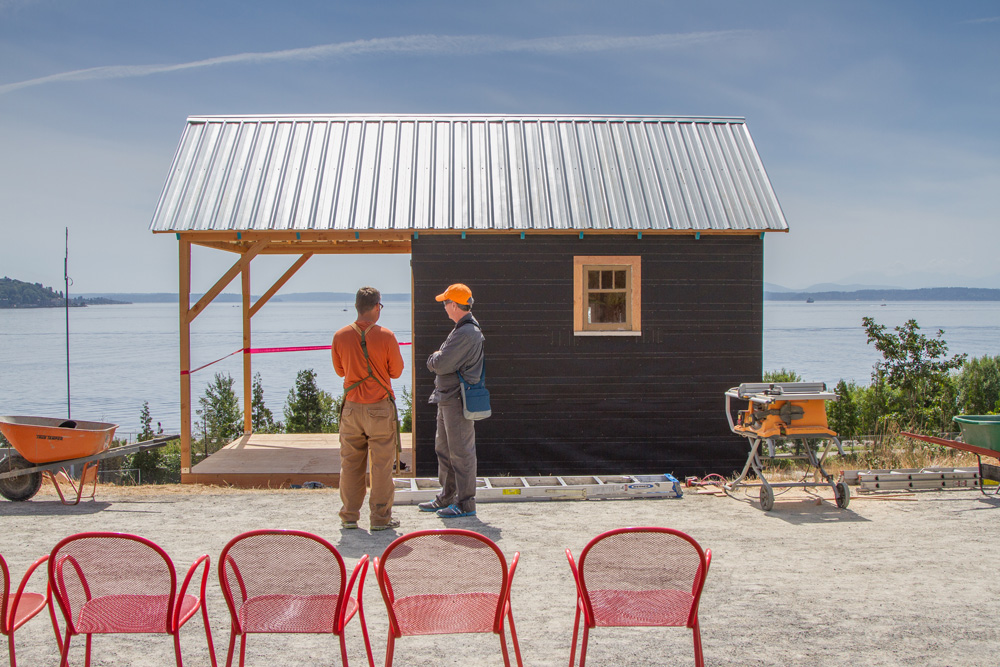
SAM: I have one question left about art and craft and their contentious recent history. Historically, they were tied closely together. How do you negotiate that?
Dan Webb: I still think we really fall prey to seeing things in a really binary way so if it’s art, it’s not craft; and if it’s craft, it’s not art; or if it’s a conceptual, then it’s not an object; or if it’s an object, it’s not conceptual. I’m a little disappointed at how binary even smart people can be about that stuff.
I think we’re at a point in history where an artist can do anything that they want to do and call it art. In fact, if anything’s art, then everything’s art and if everything’s art, then the word just lost all specificity. There’s no meaning to that word and it’s by design.
I think a lot of modernist artists and the post-modern artists, with a lot of effort and foresight, made that word meaningless, functionally meaningless. If you have knocked all those walls down that surrounded this idea of art, where are you?
I think when art gets subsumed by life and the bigger world rather than the art world—then it’s all just the world. And that’s not scary. And art didn’t go away. The idea of having to digest the experiences that’ll happen to us didn’t go away. It’s just that it starts to be more integrated into something bigger and I think it’s a really exciting time for that. Whatever you want to do, it’s all good.
For example, I think the move towards social practice is really interesting. But then you’re in a realm where essentially telling a story or interacting with people becomes your art. If you do that, then you have to understand that—the nurses at the children’s cancer ward, what’s their story? I mean, you’re elevating your story because it’s “art.” When what you’re actually doing is saying, let’s just realize that all stories are part of this conversation.
I think it’s binary to say that the social practice story must be art but that the other stories that are so prevalent in all of our lives are less so because they haven’t identified themselves as that.
If you really want to understand the repercussions of making the word meaningless, then you’re in a big environment with a lot of really incredible stuff. I talk about that with technology. There’re a lot of kids that are really interested in making art with technology. Technology’s got to be this new cool thing and great art will be made from it—but maybe great art already has been made from it. There’s a rover on Mars right now. The rover’s totally rad. If you’ve seen it—it’s so awesome. It’s a six-wheeled super-cool thing and they [the people that made it] become your colleagues. If you want to go down that path, they become your colleagues.
For me, my colleagues happen to be woodworkers and carvers. I really jettisoned the idea that I’m going to fetishize originality or I’m going to say something that no other person in history has ever thought of. That ship has sailed, luckily. I’d way rather feel like I was stepping into a conversation and I was part of something rather than reinventing the wheel and feeling proud of myself for doing that. I just think that’s a function of where we are.
Modernists made art and their brave, cool selves became their lives, but I think now we live a life and the result is our art. So it’s flipped. A lot of it is flipped and that’s a good place, exciting. It means that I get to have cool conversations about what I do with the lady that comes and reads my gas meter because she’s able to get a little bit of what I do and it’s not for art people. It’s not designed just for the super-smartypants that went to art school.
That’s just a facet of a lot of really incredible stuff that’s happened. Like T.S. Eliot said, you’ve got to read everything. Knowing about contemporary art really puts you in that category. You have to know a lot about visual information and some of that is cats flushing the toilet on YouTube, and there’s an equality to that. You know, there’s Marcel Duchamp on the one hand and cats flushing the toilet on the other and there’s all spectrum in between. I think a lot of us now are interested in putting all that together so—
SAM: All our pieces based on toilets?
Dan Webb: You could do it. I’m sure there’s somebody that is doing it.
SAM: Where we started, to where we are now.
Dan Webb: Yeah.
SAM: Well, thank you, Dan.
Dan Webb: Yeah.
SAM: We really appreciate your taking the time.
You can follow Webb’s progress this summer at the sculpture park. Learn more about the project on our website.
Photos: Matt Sellars
